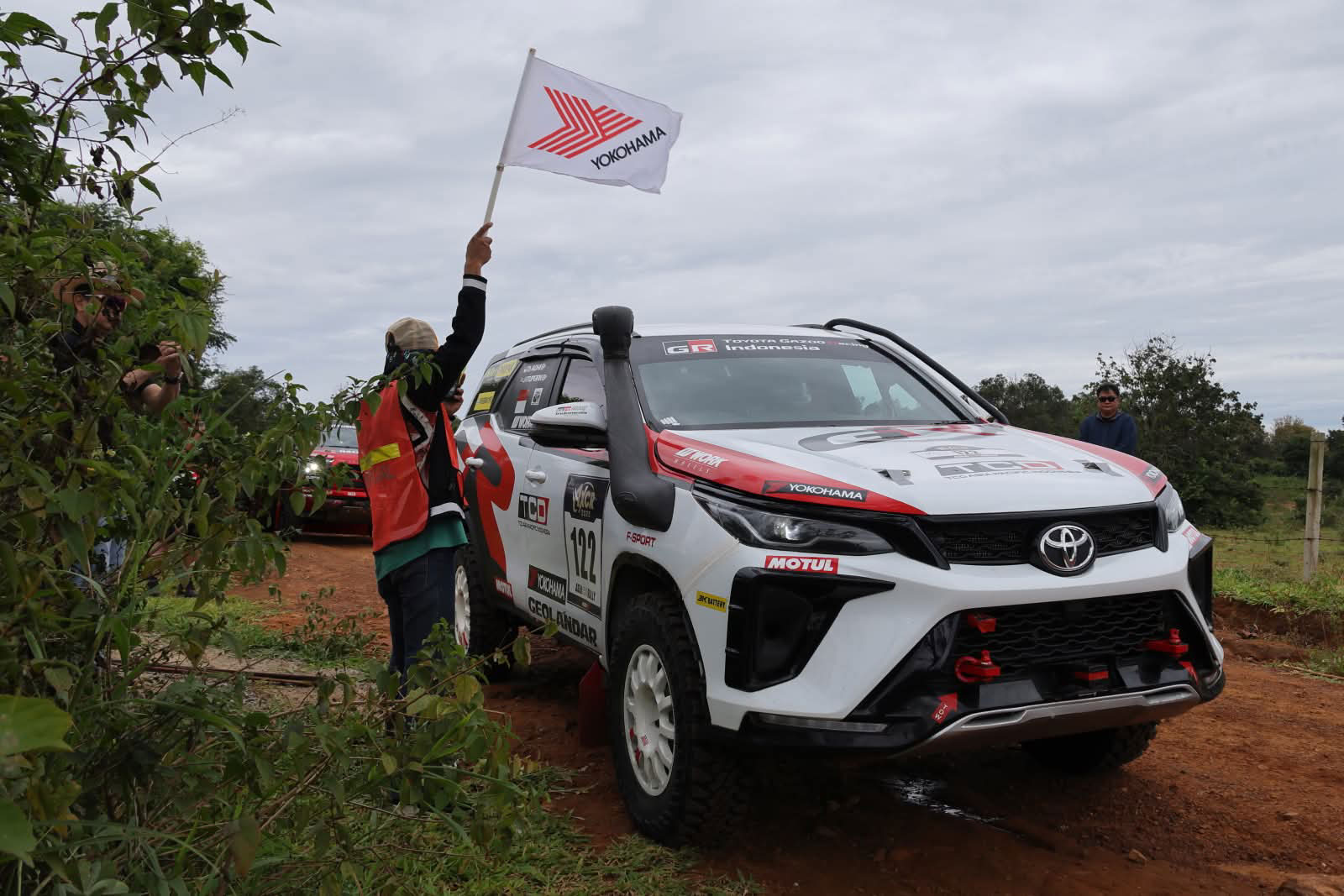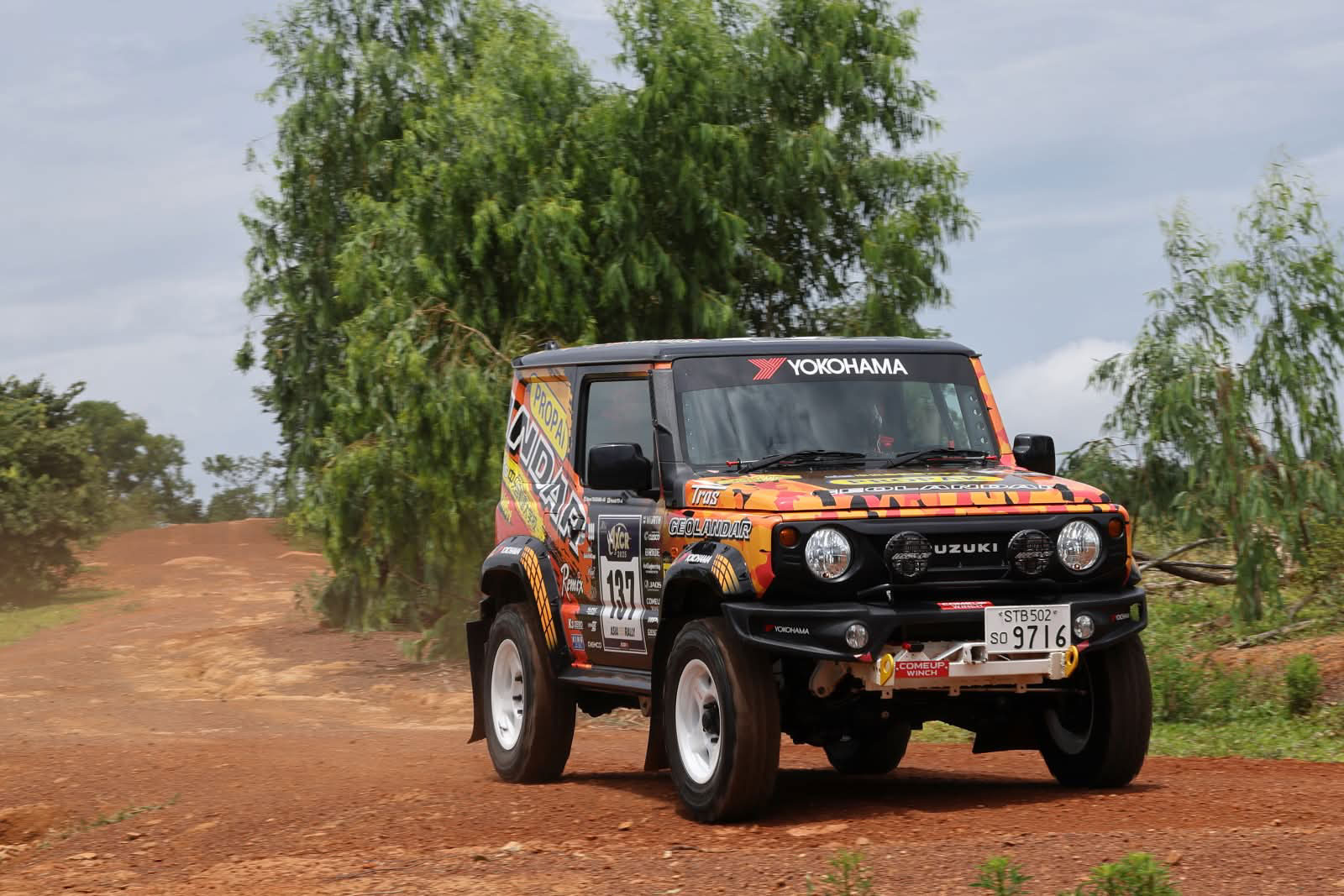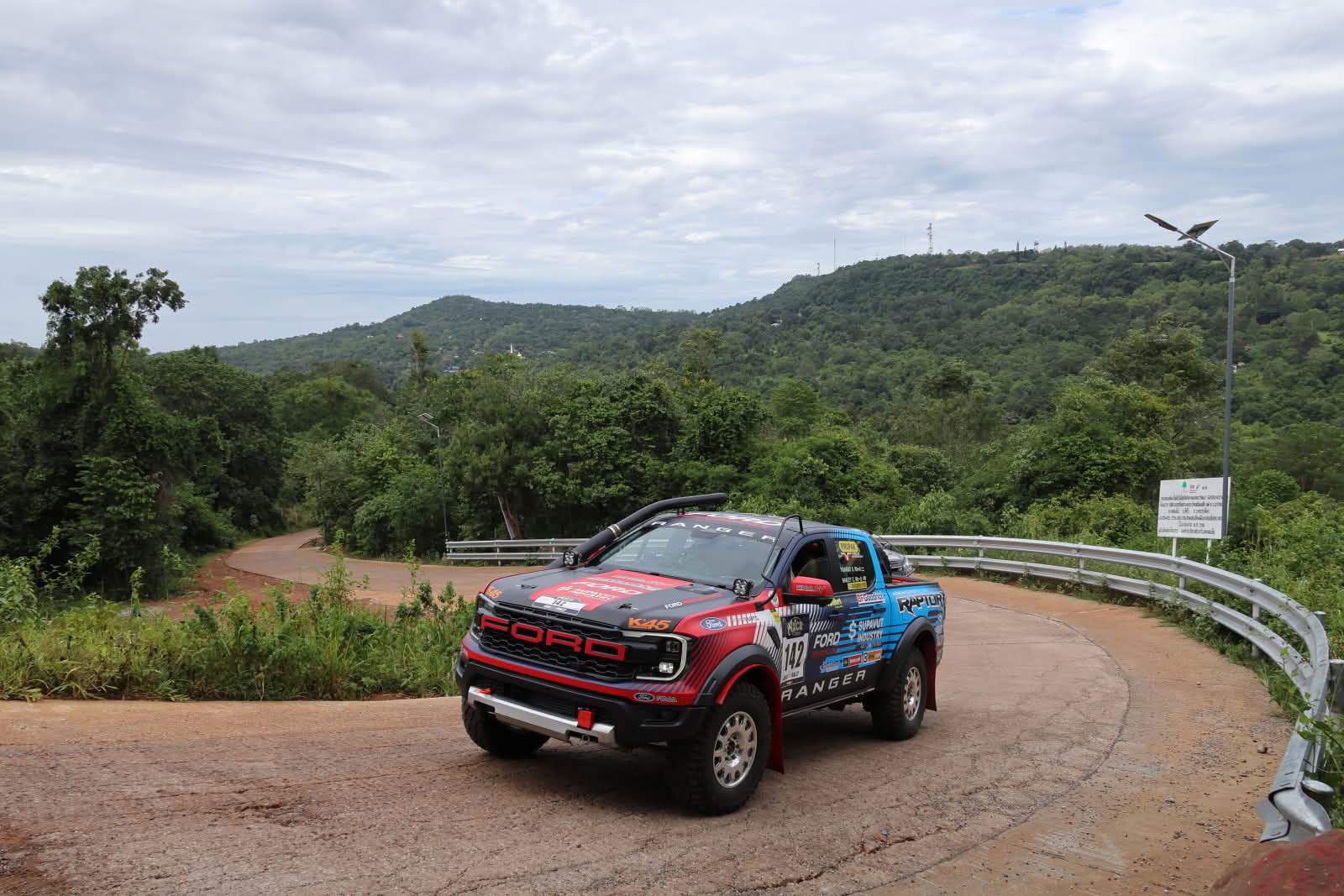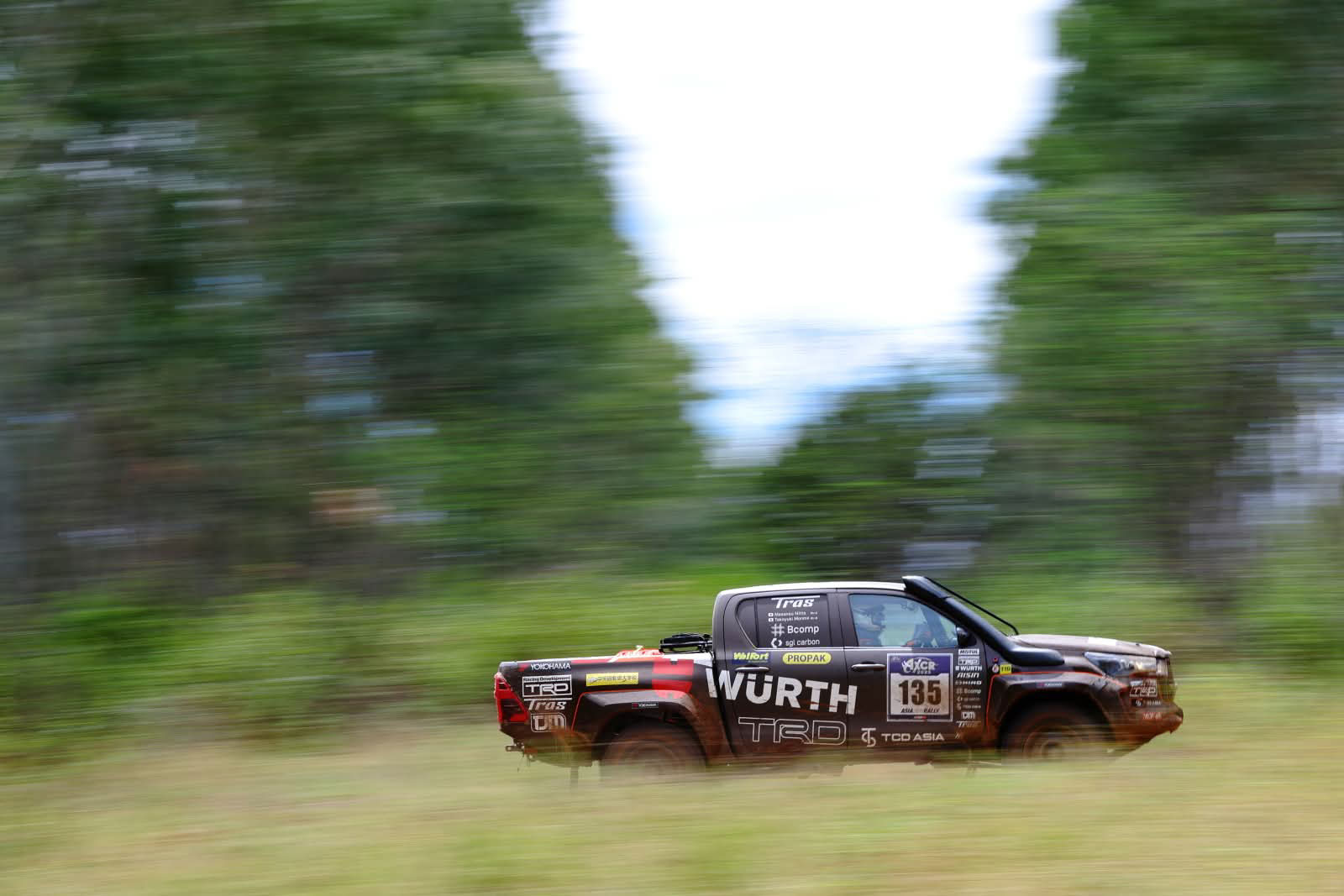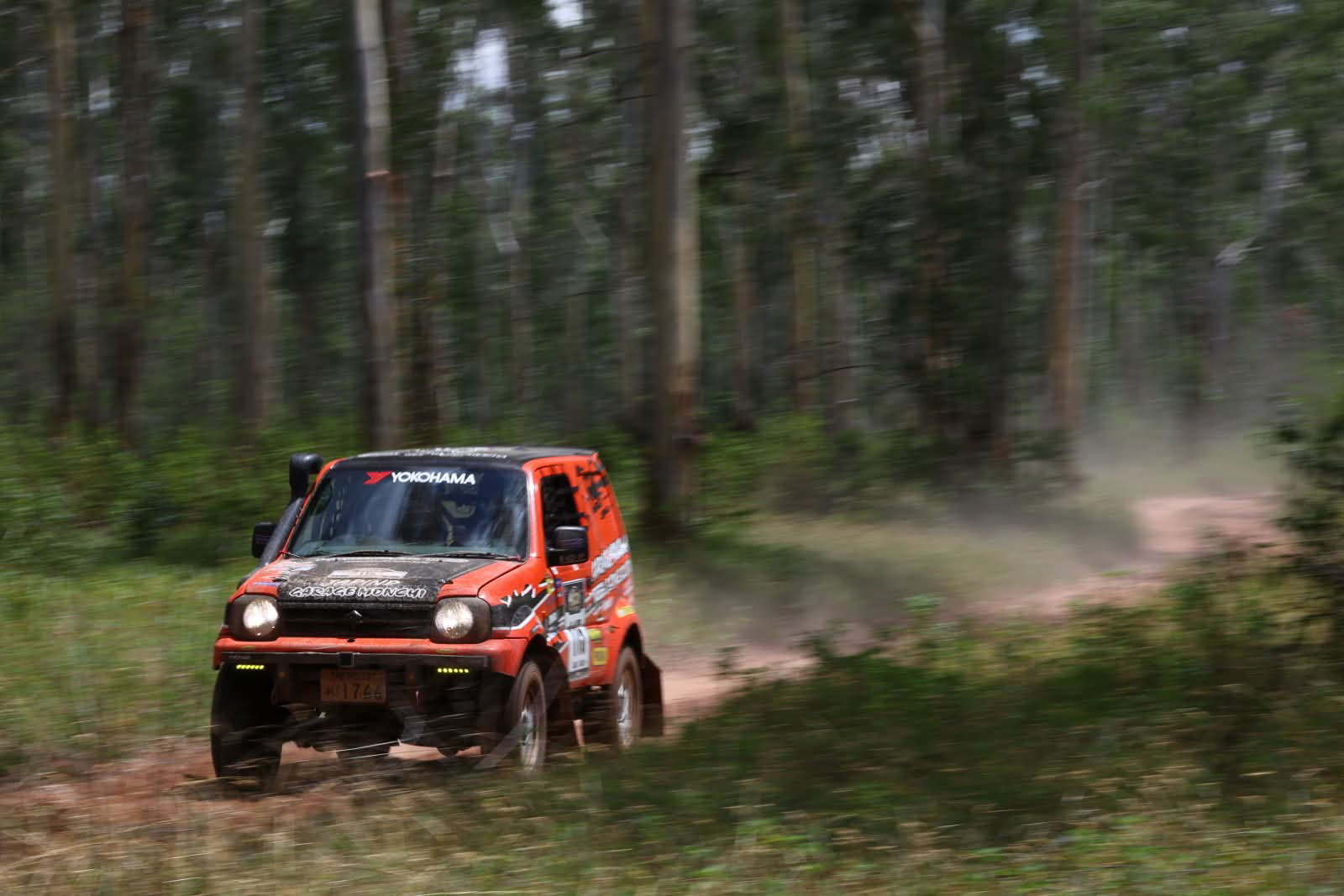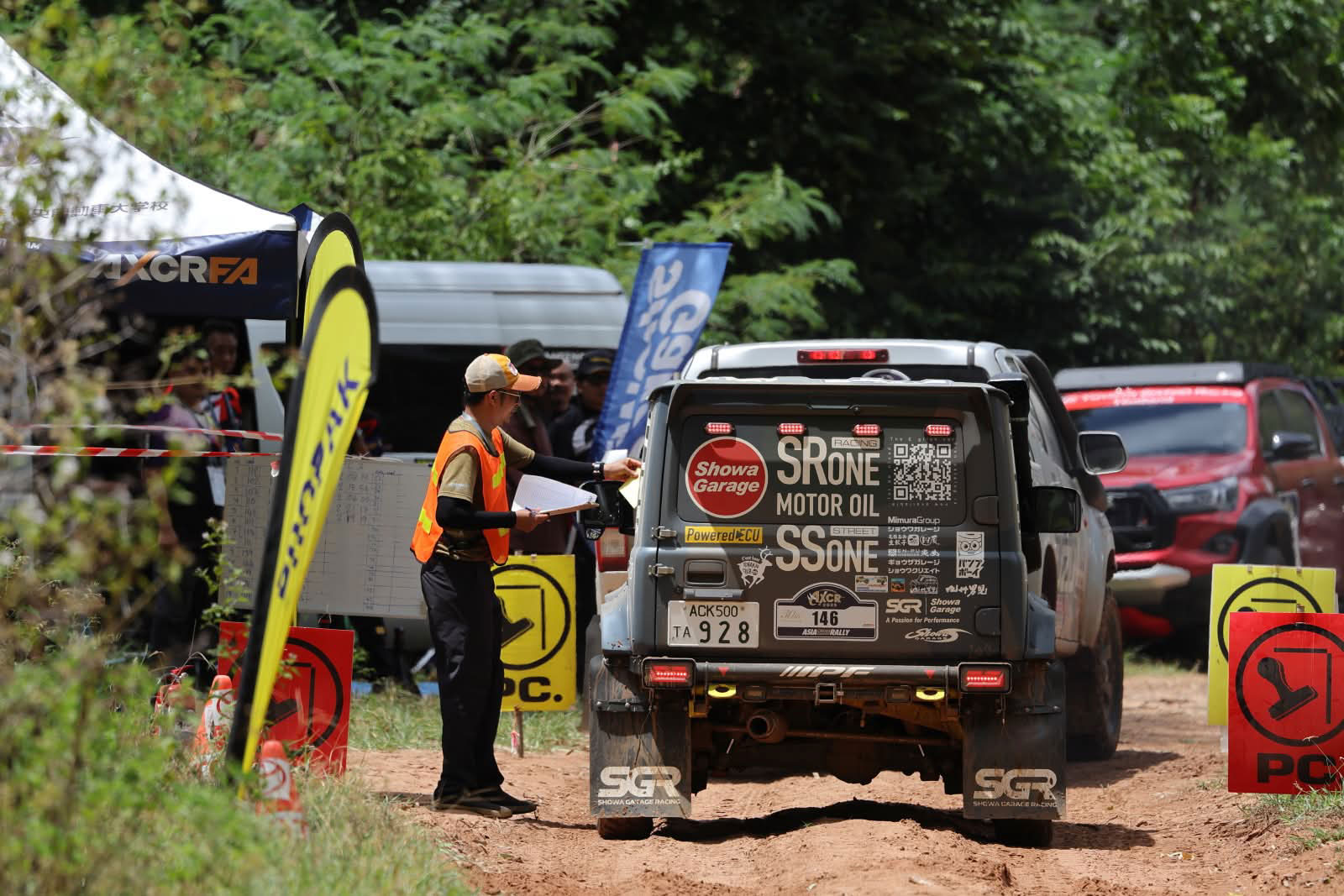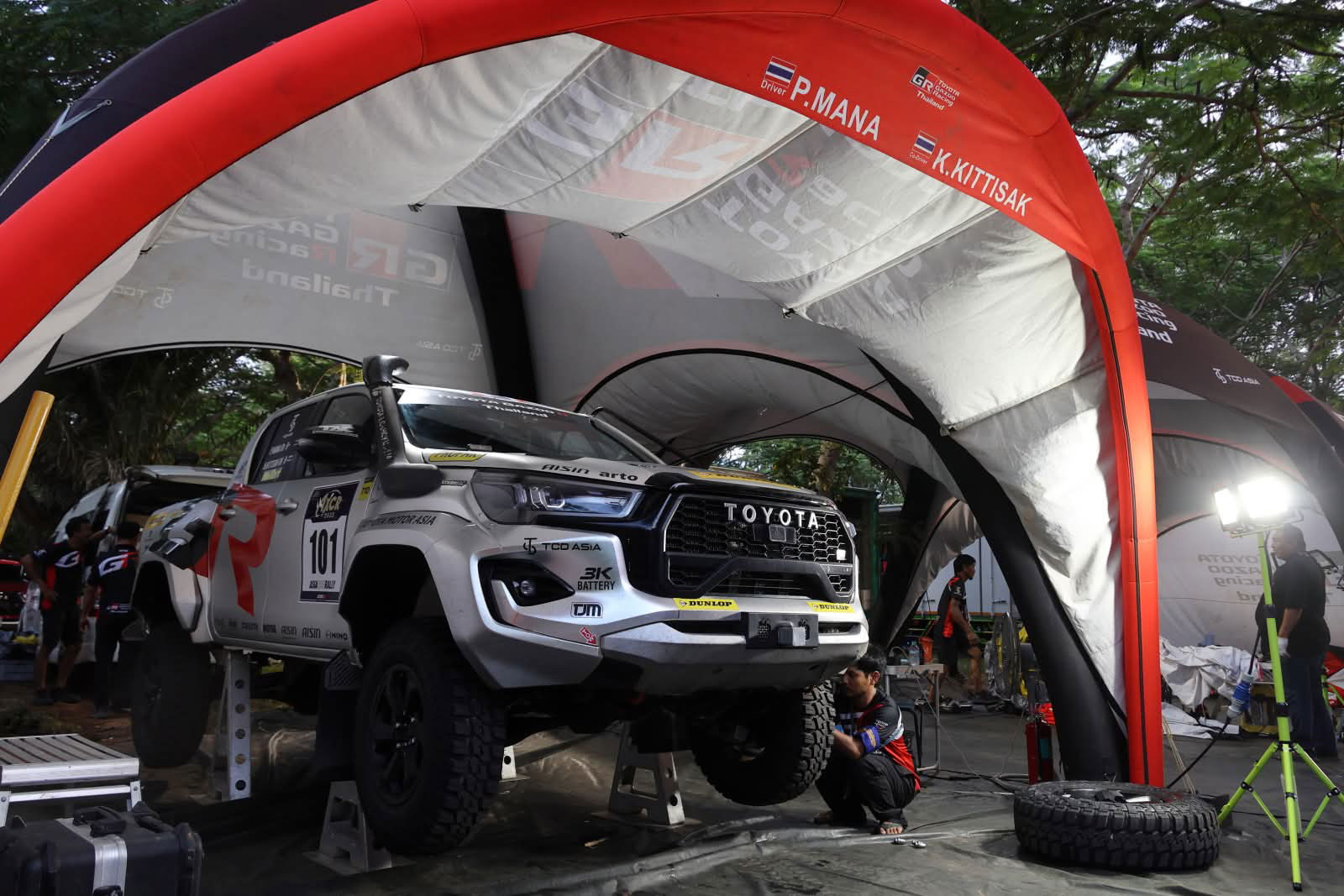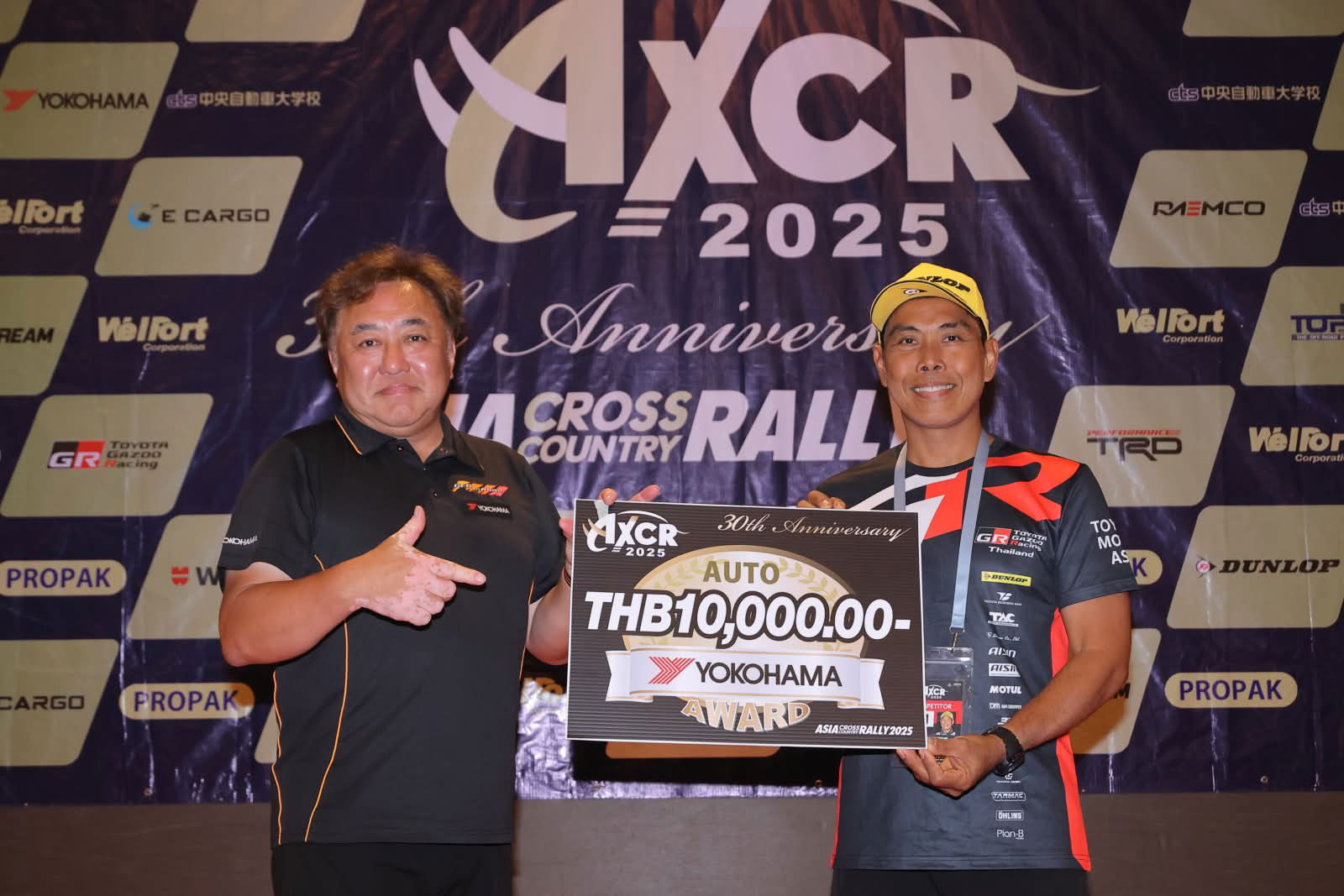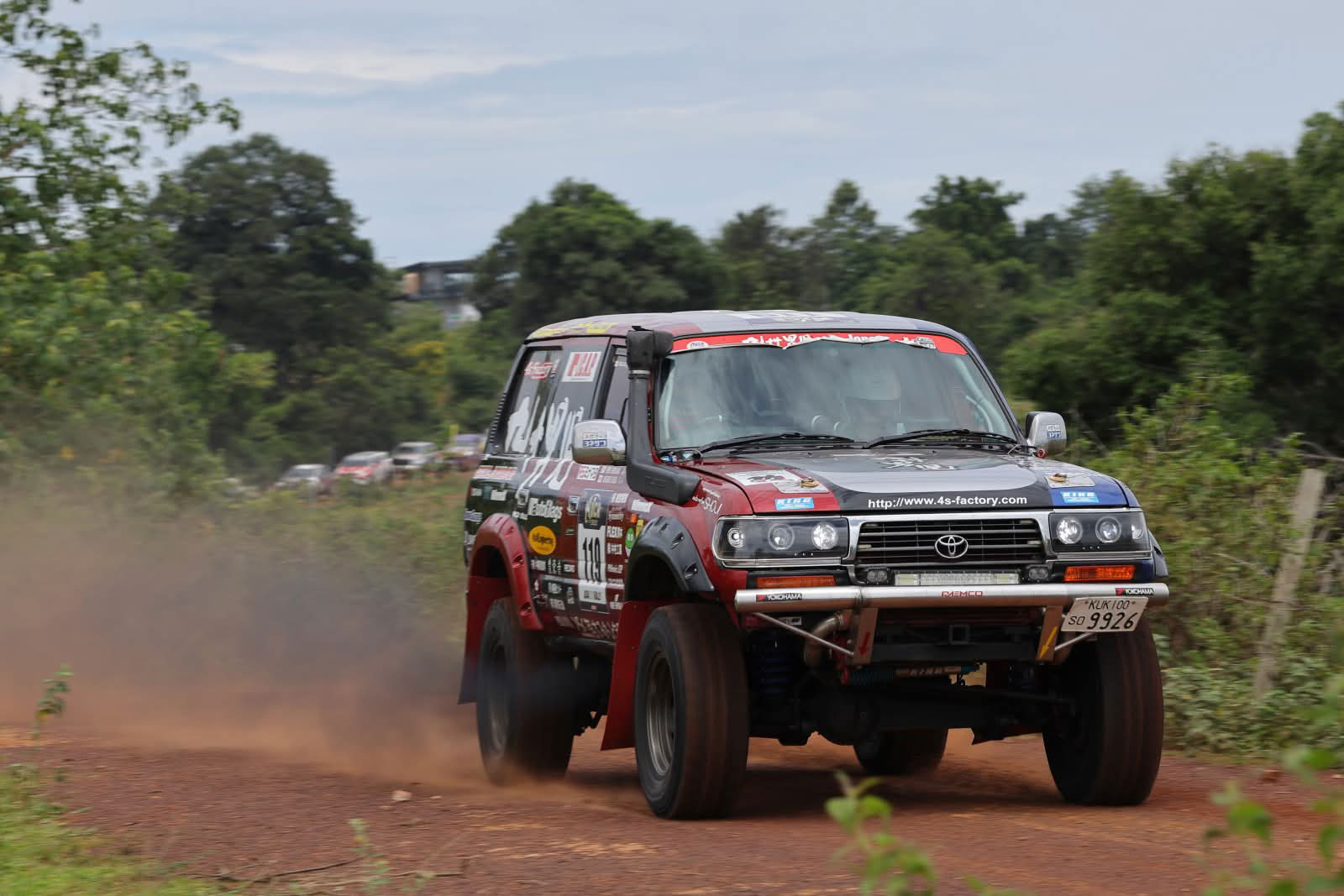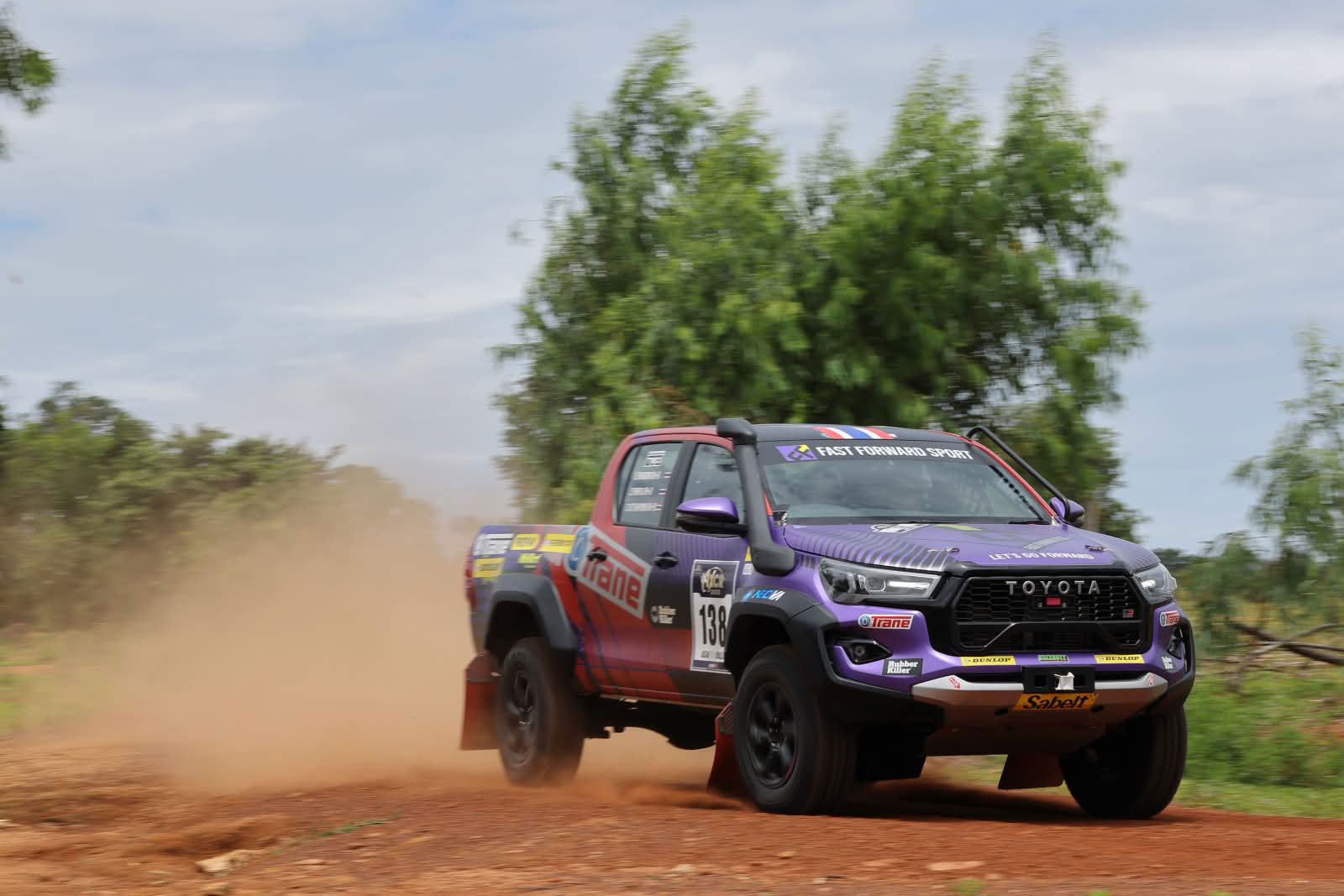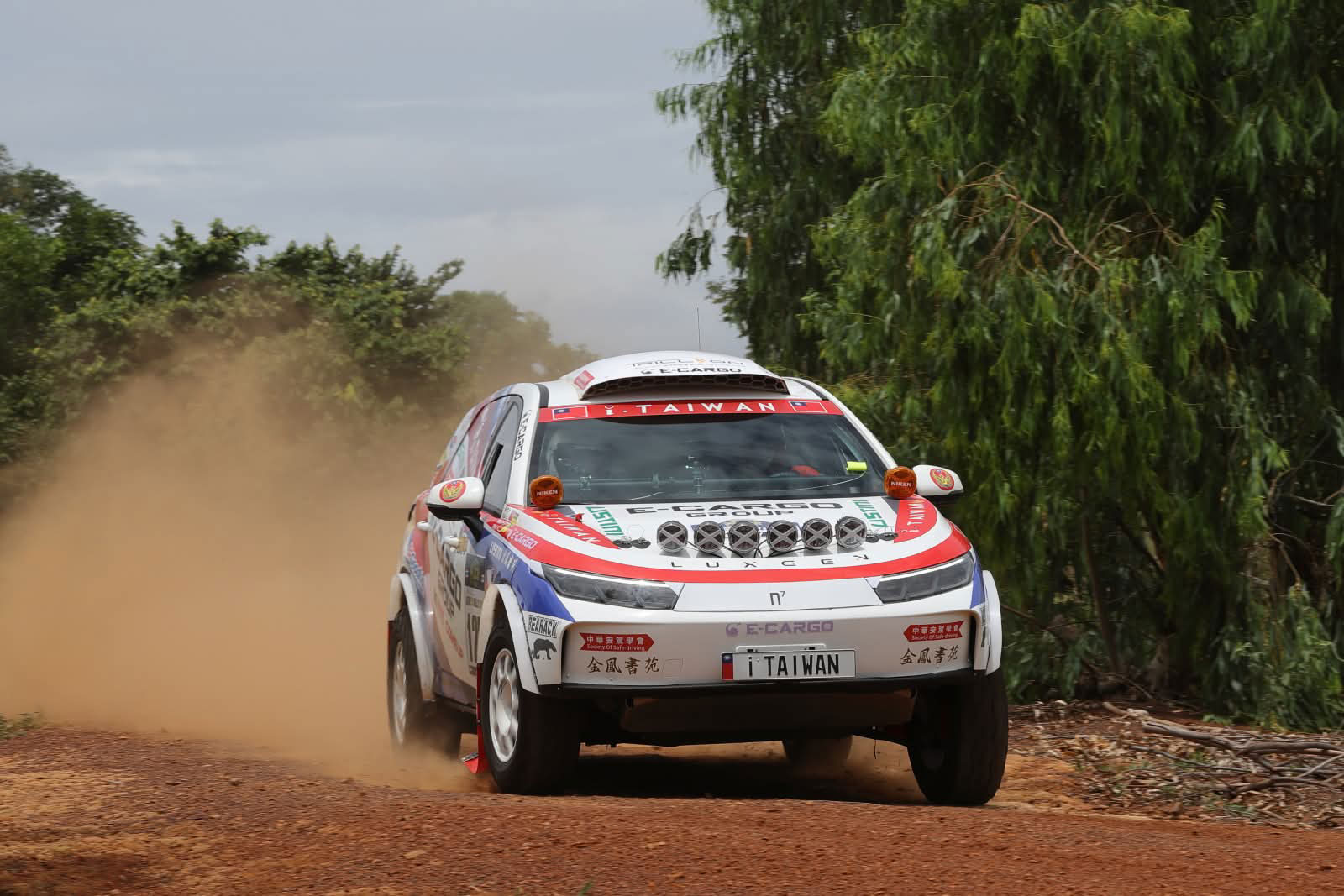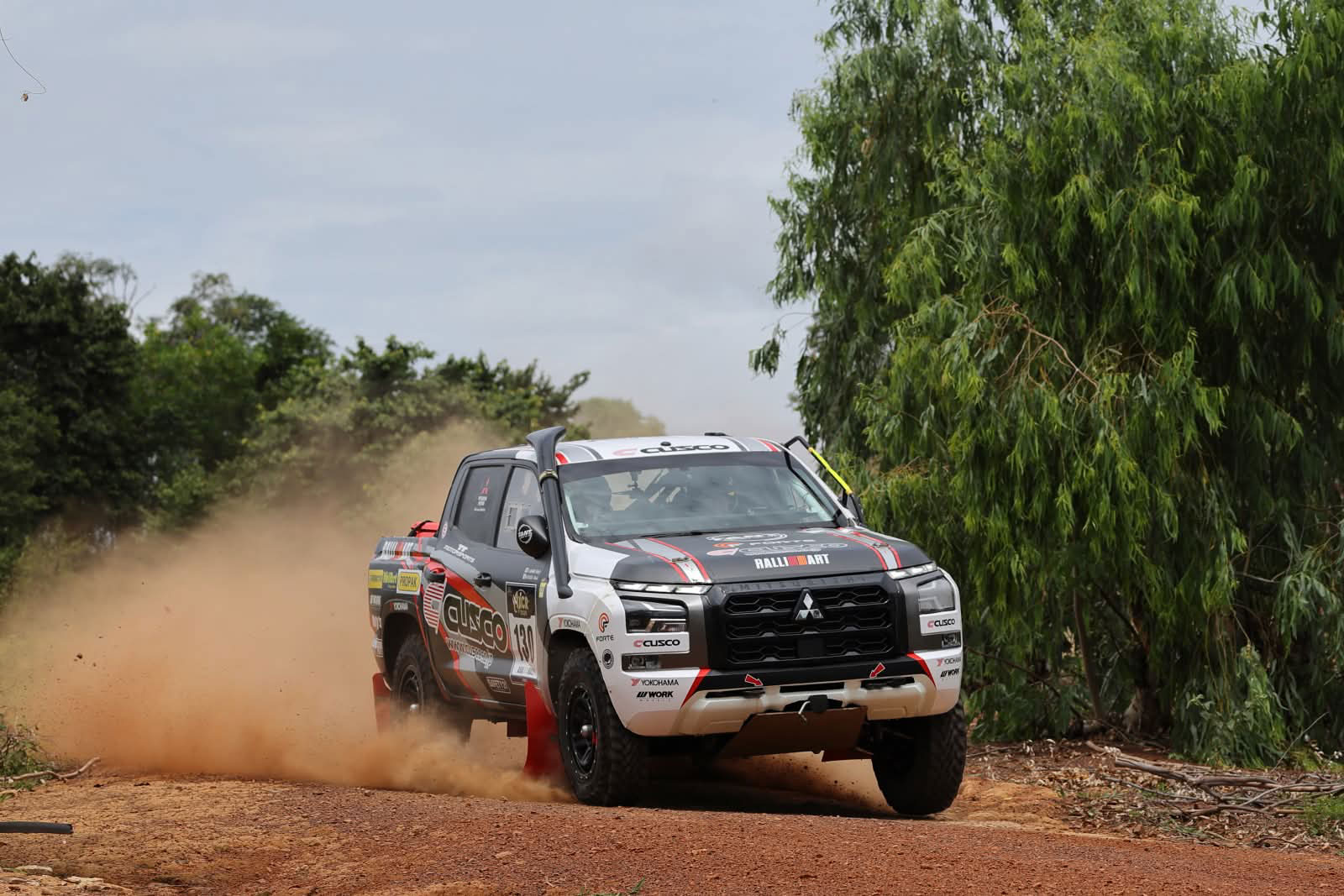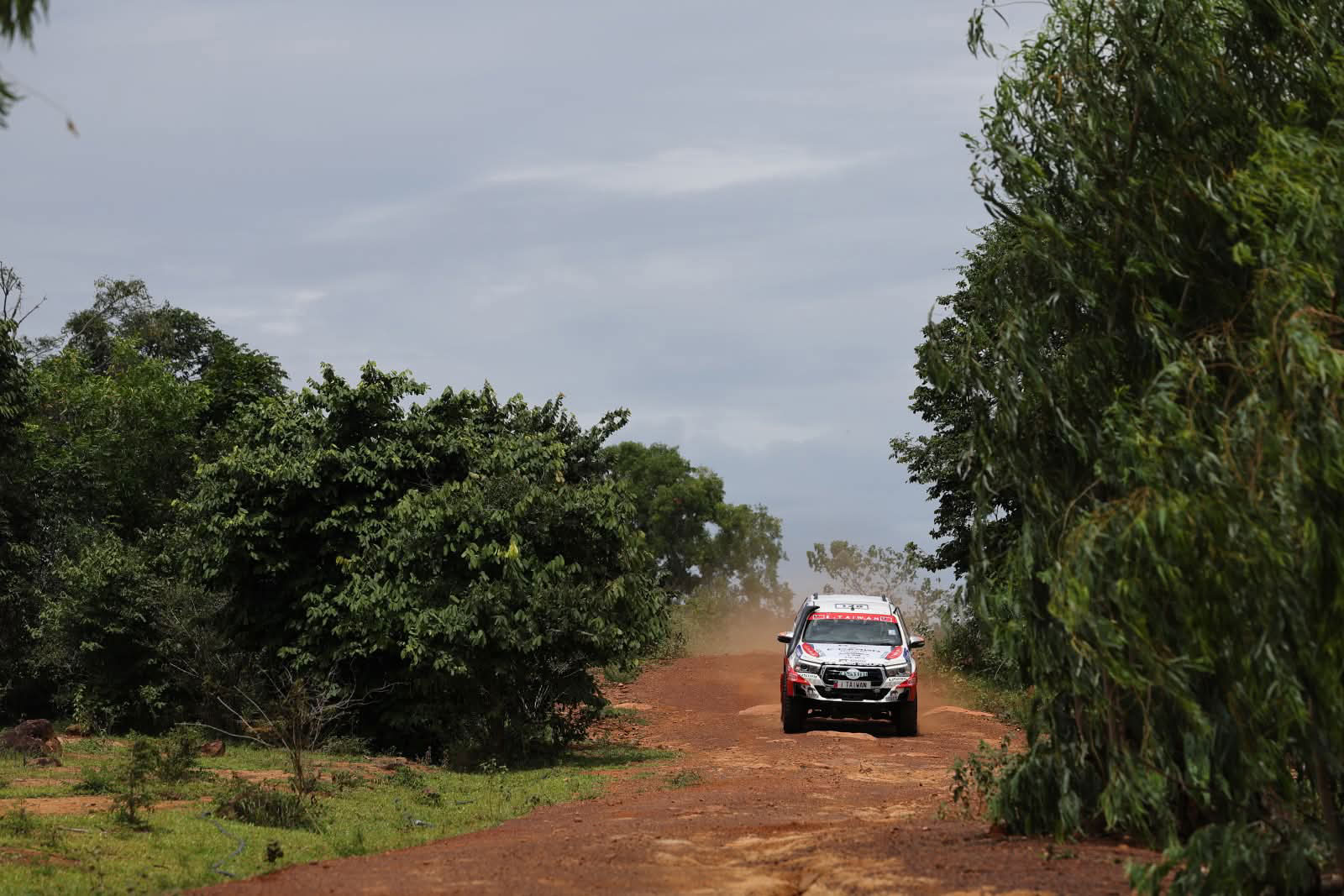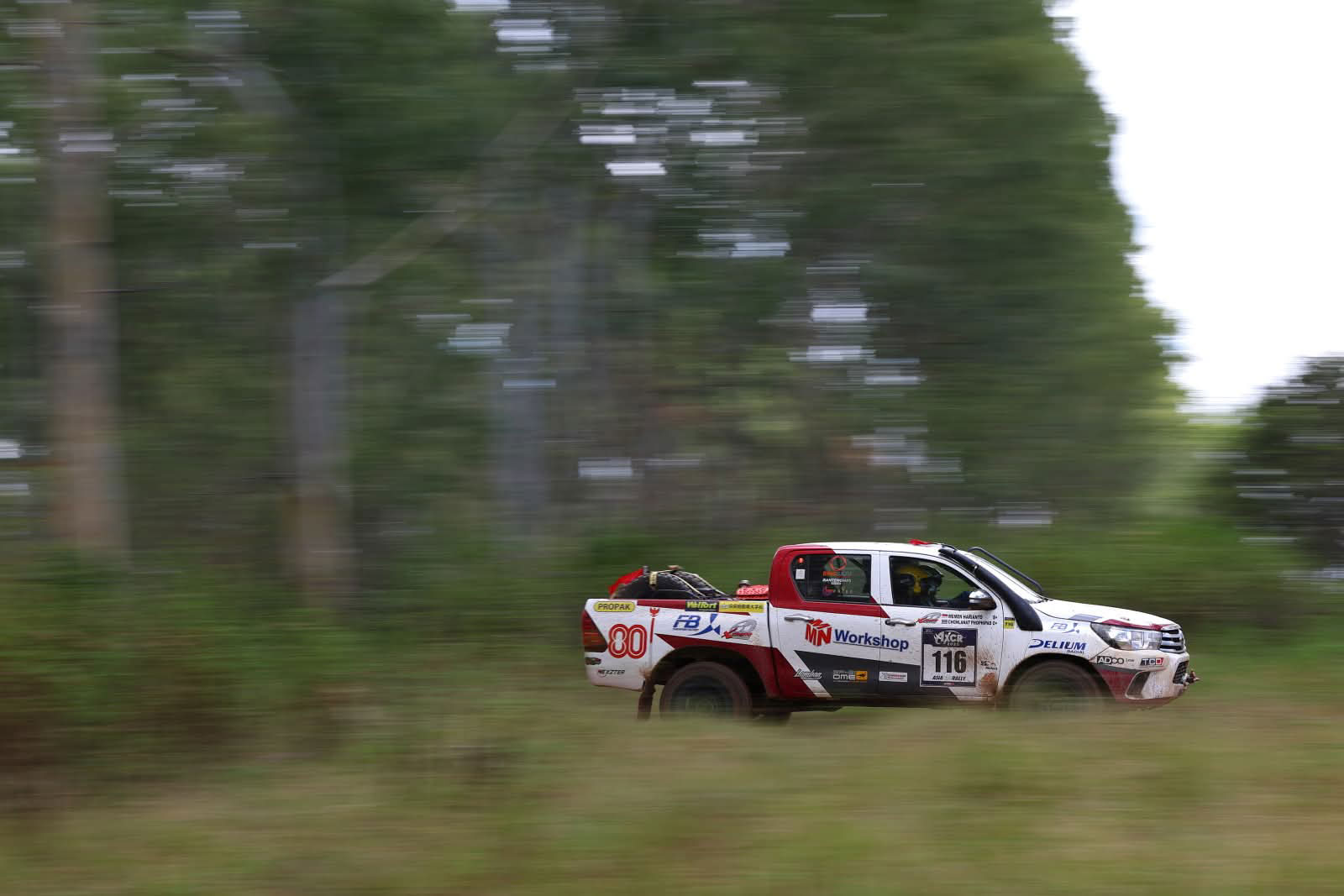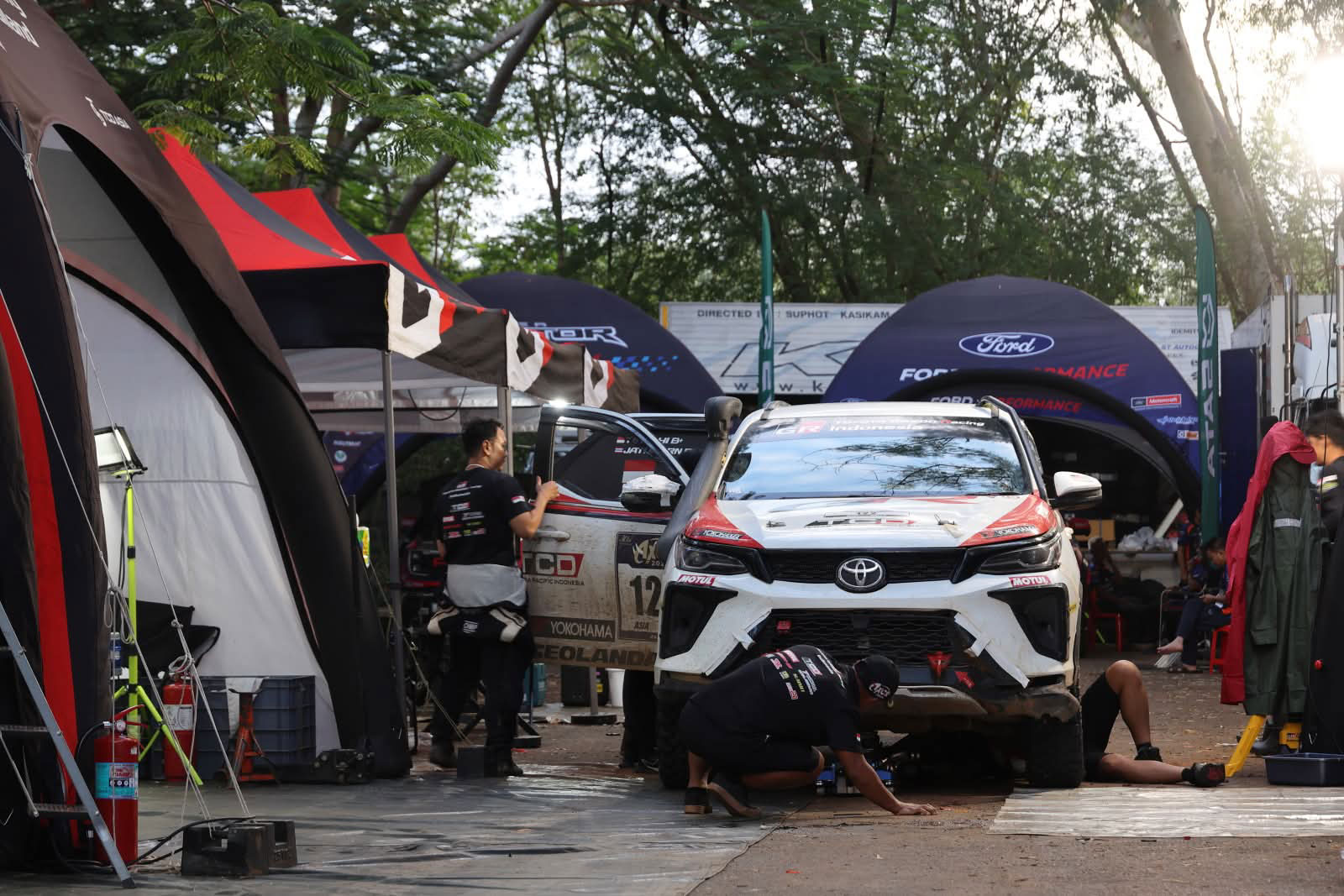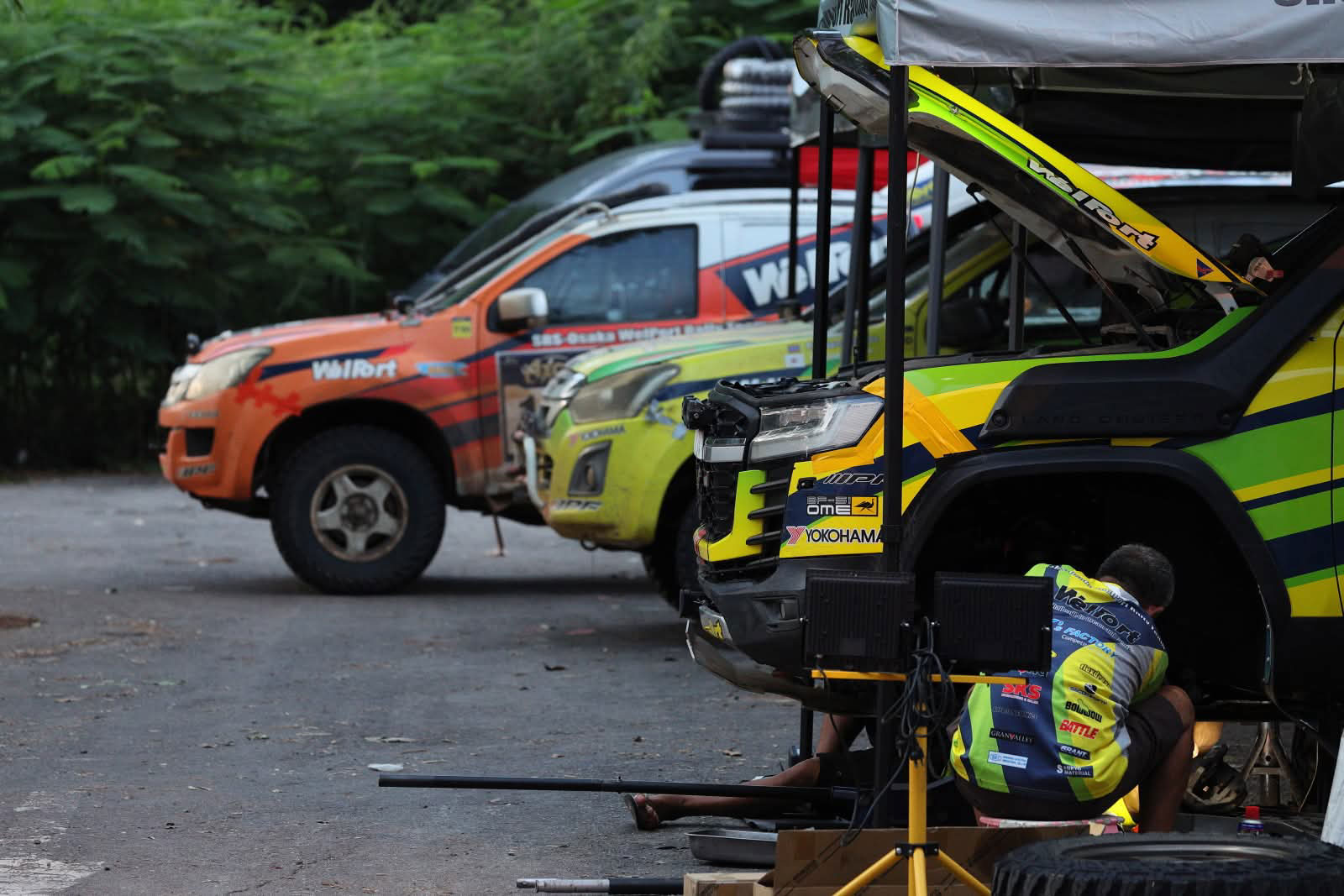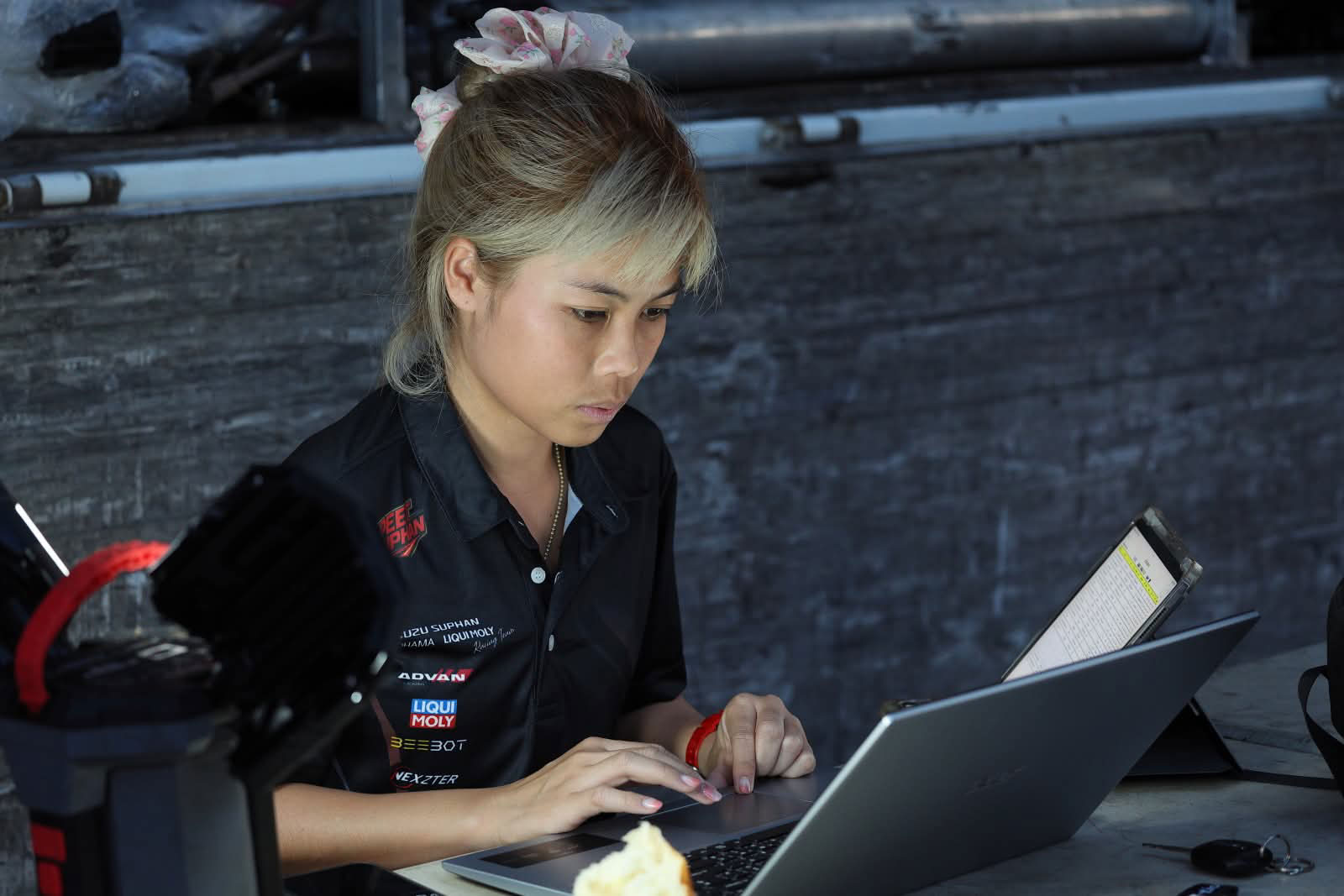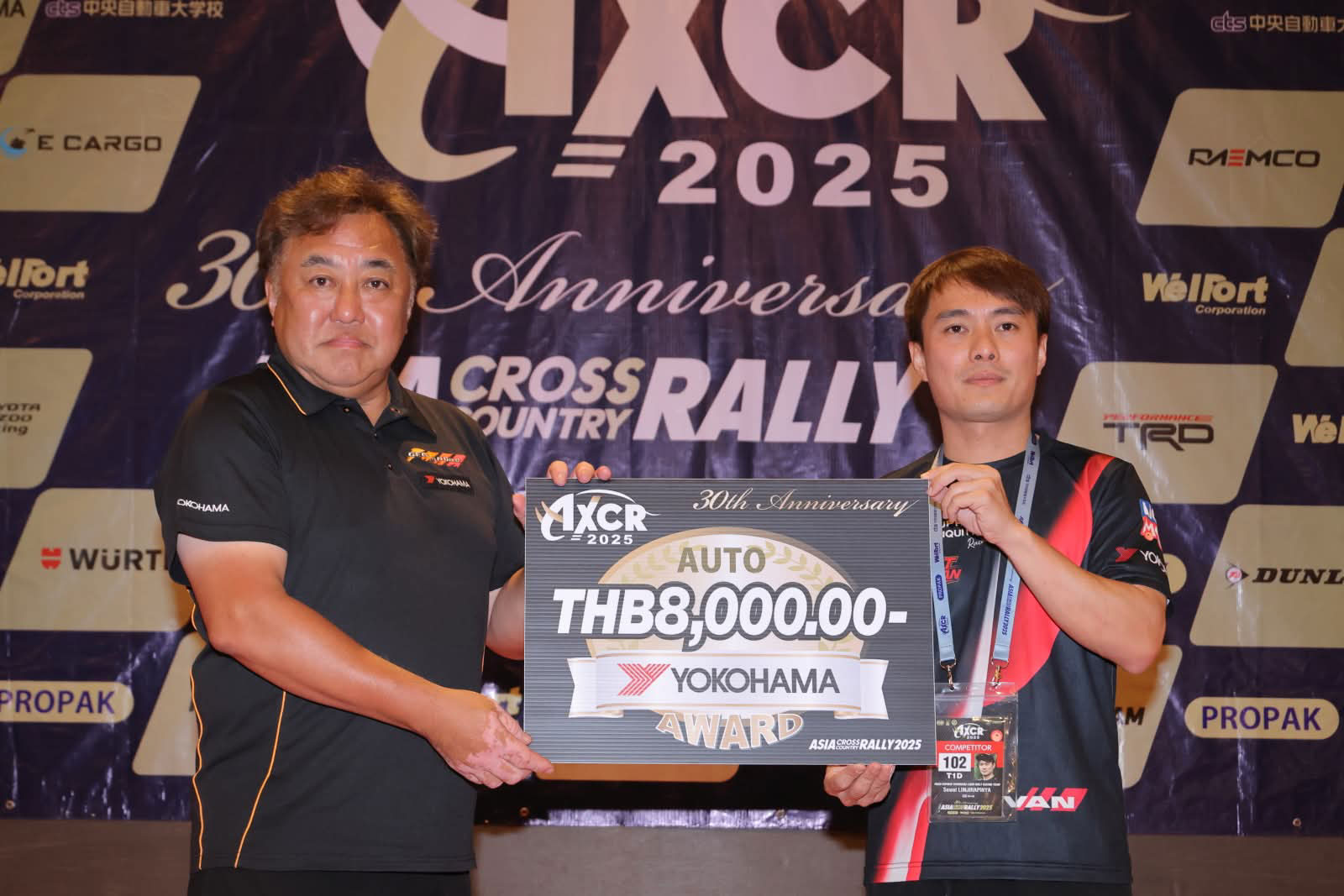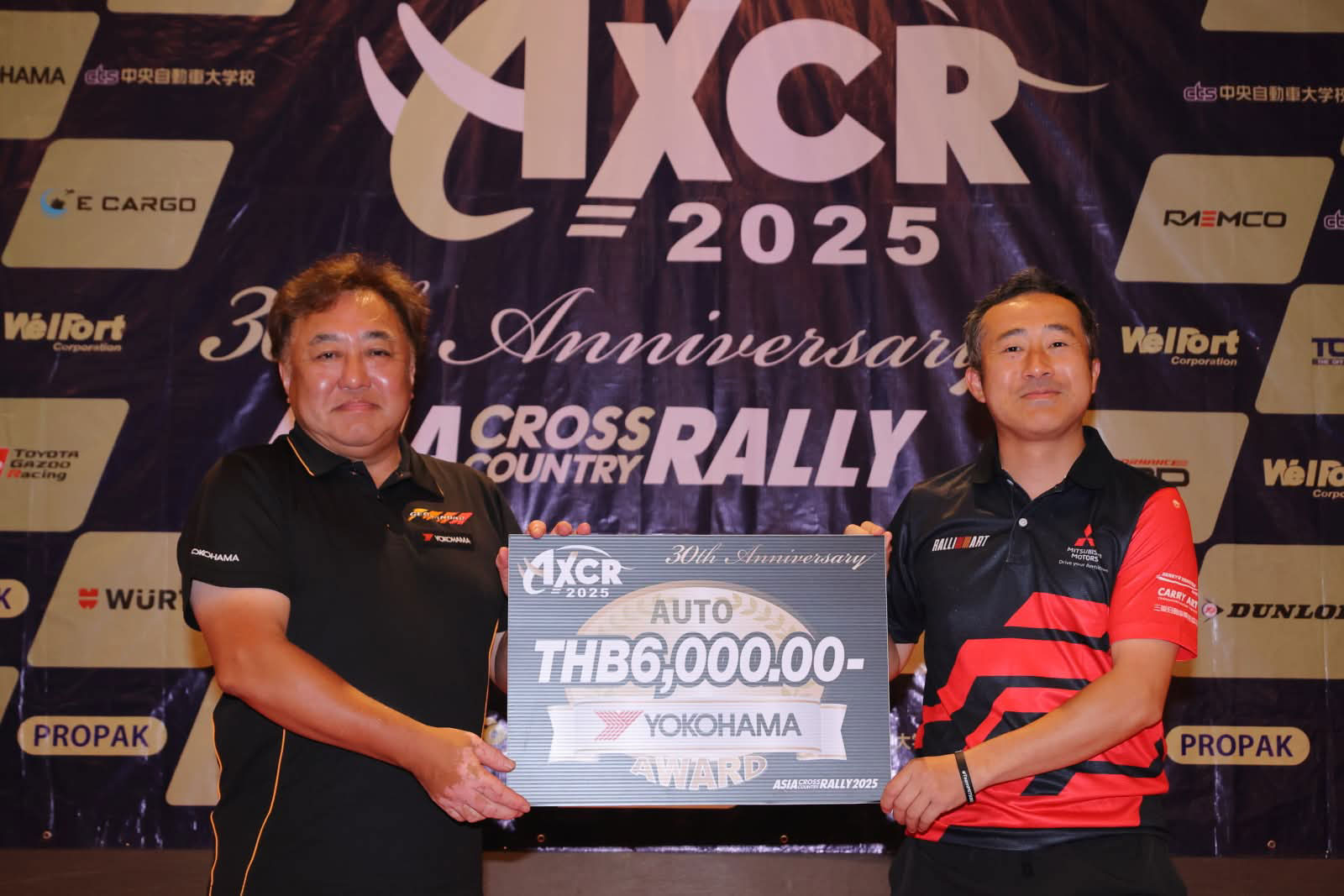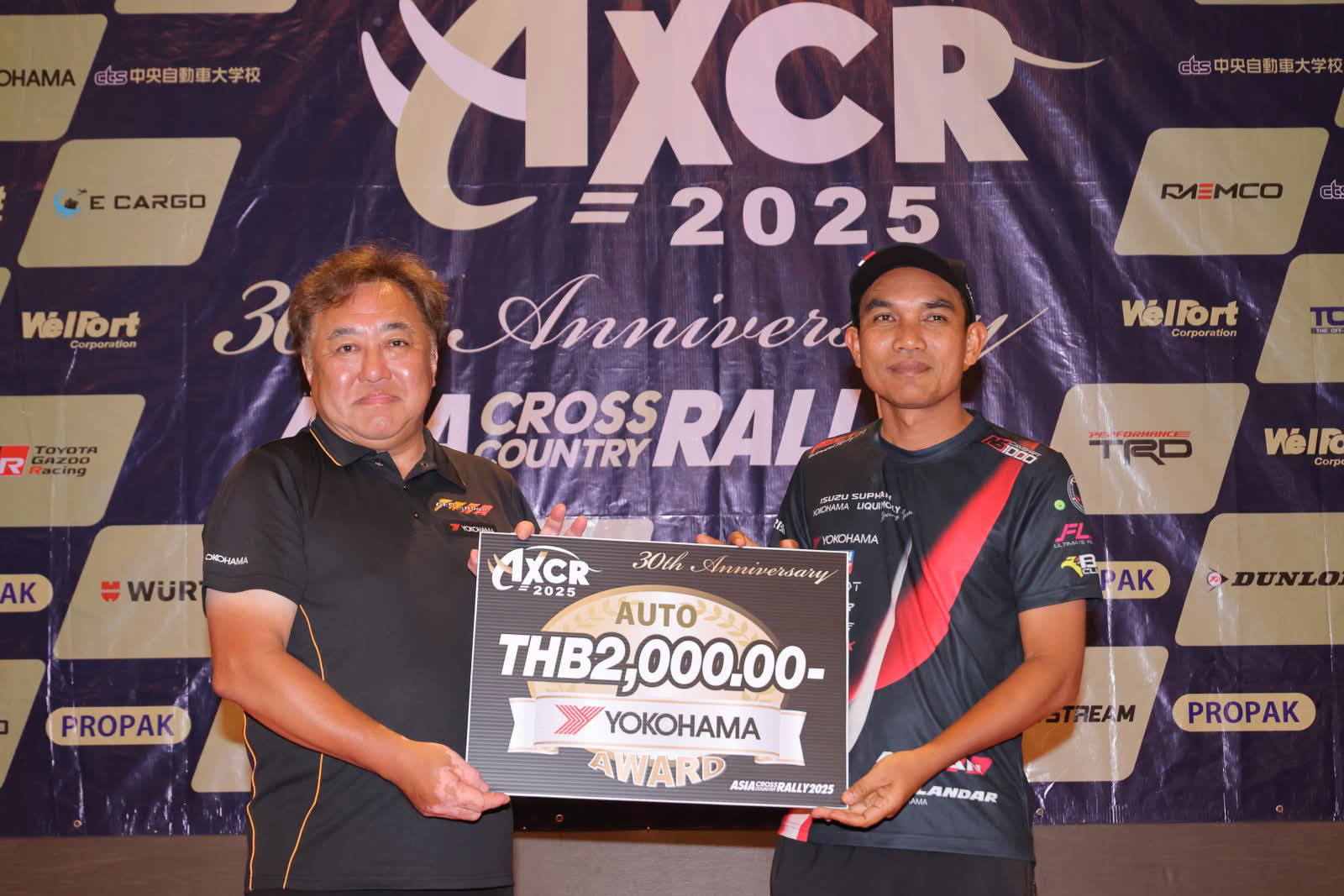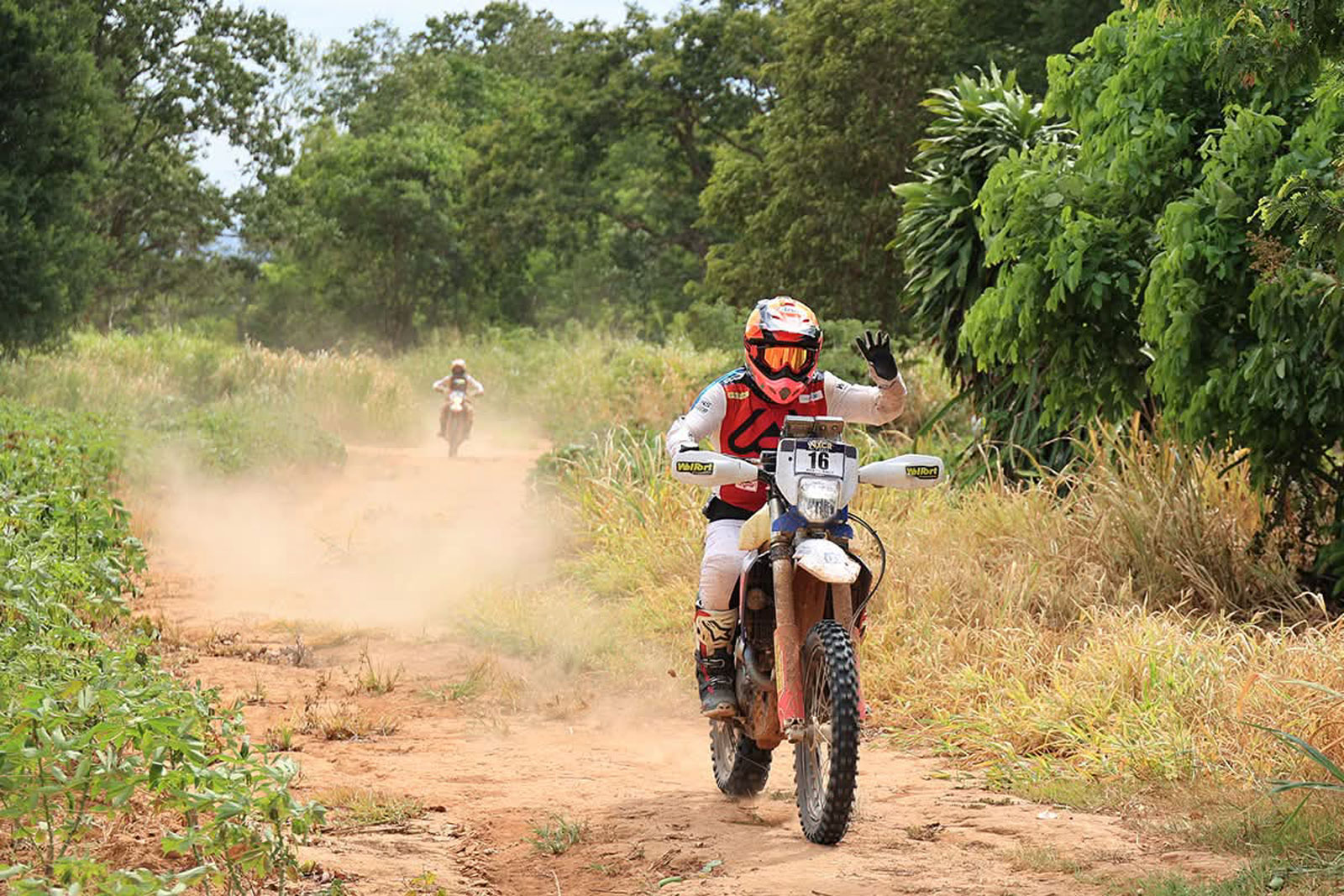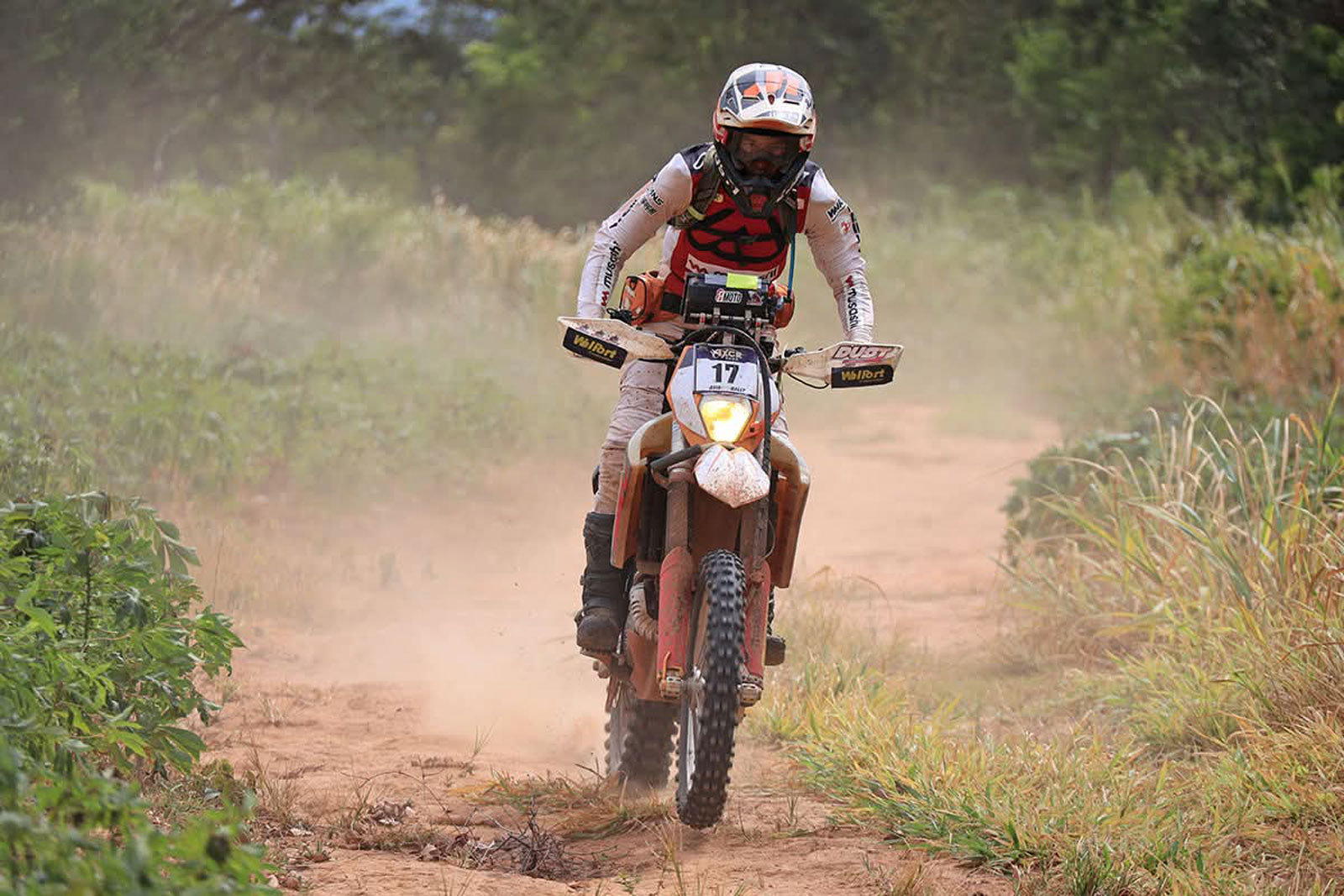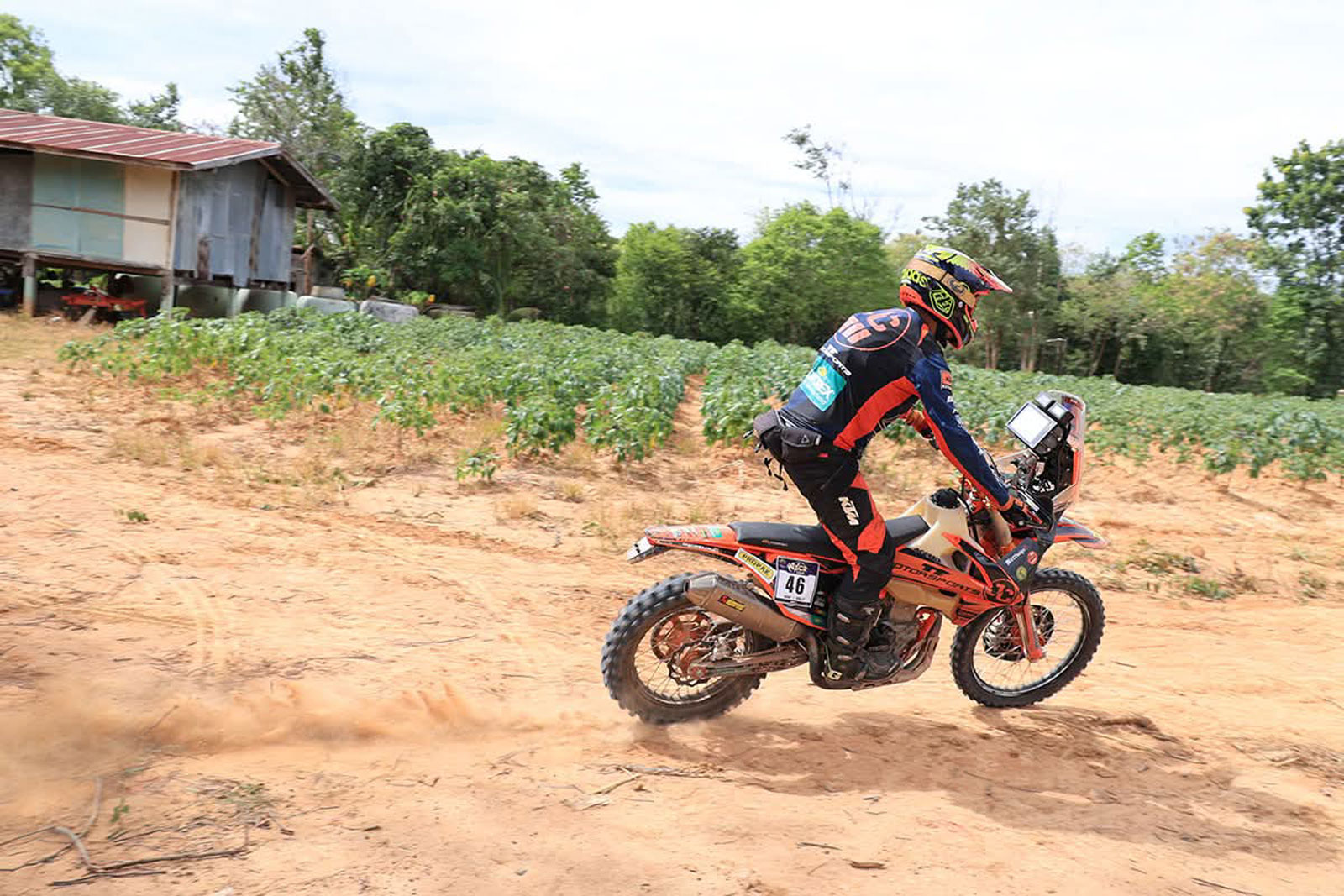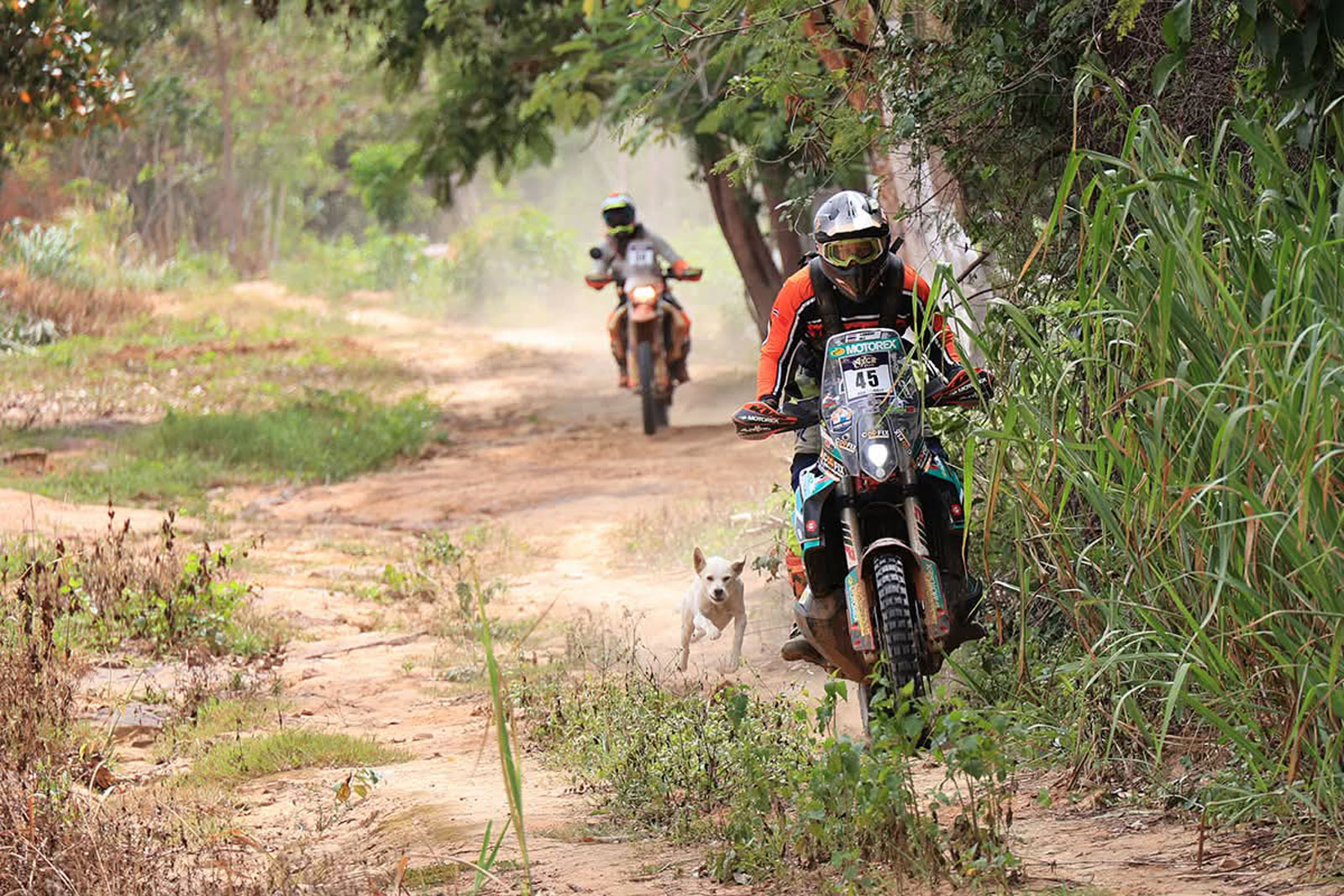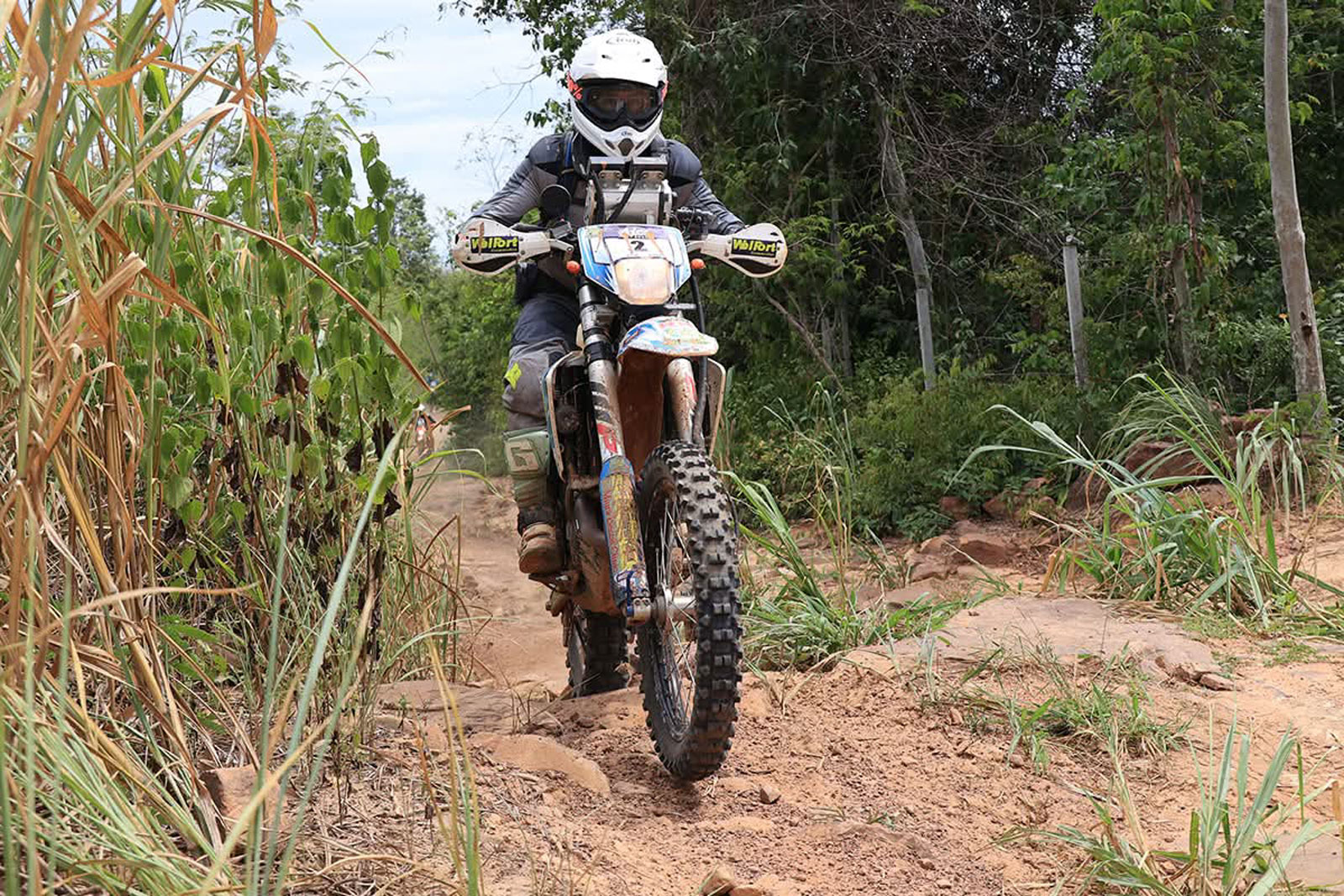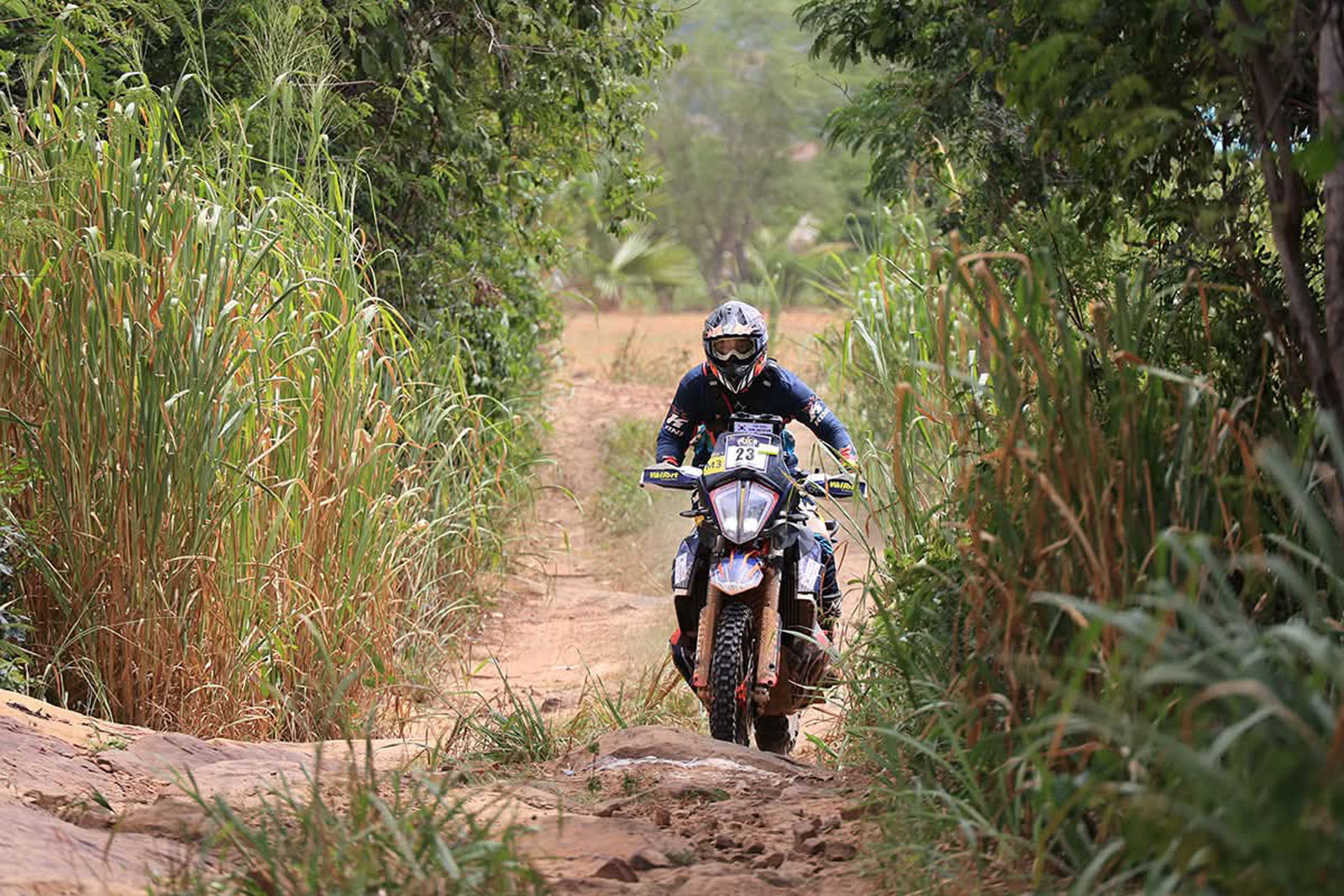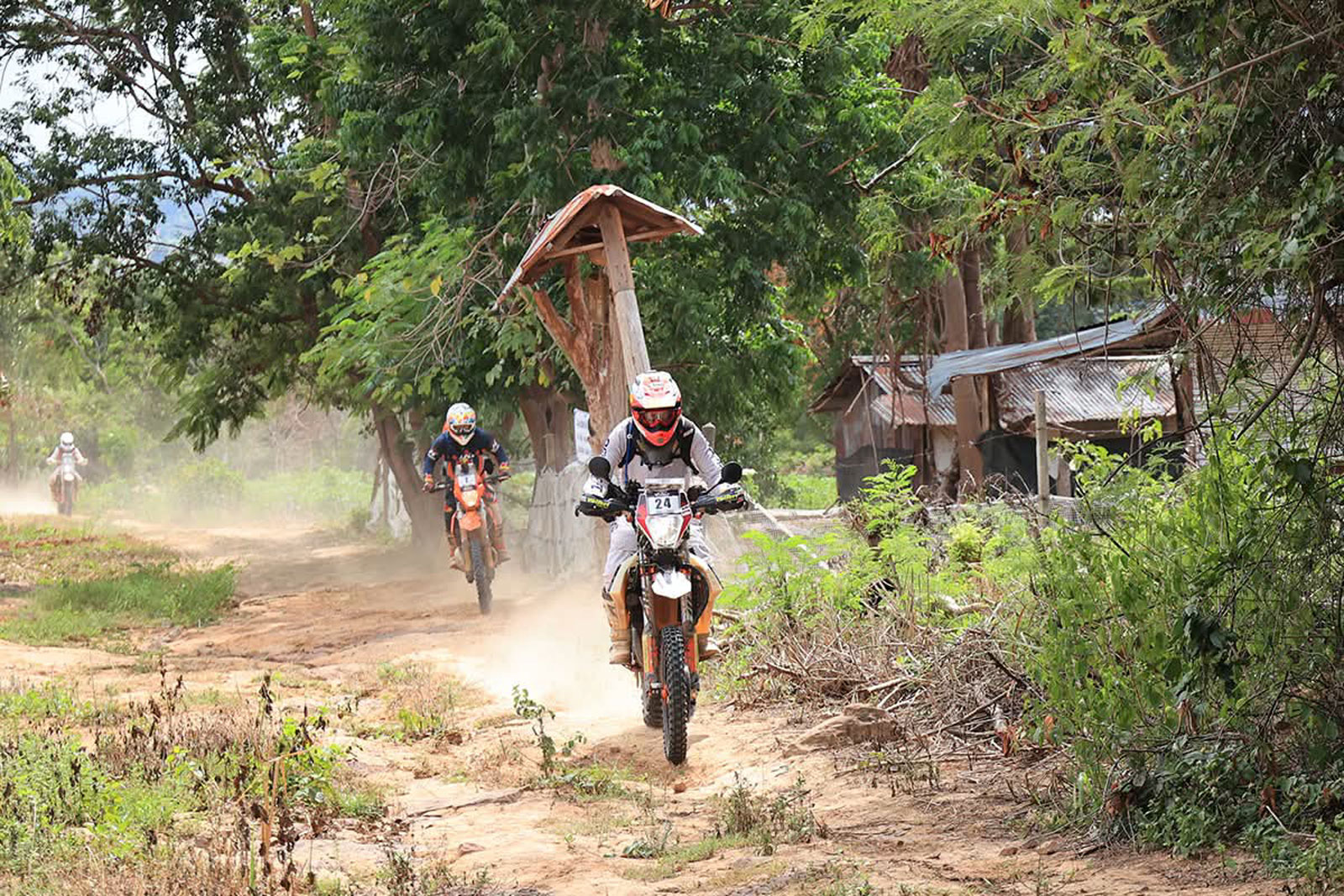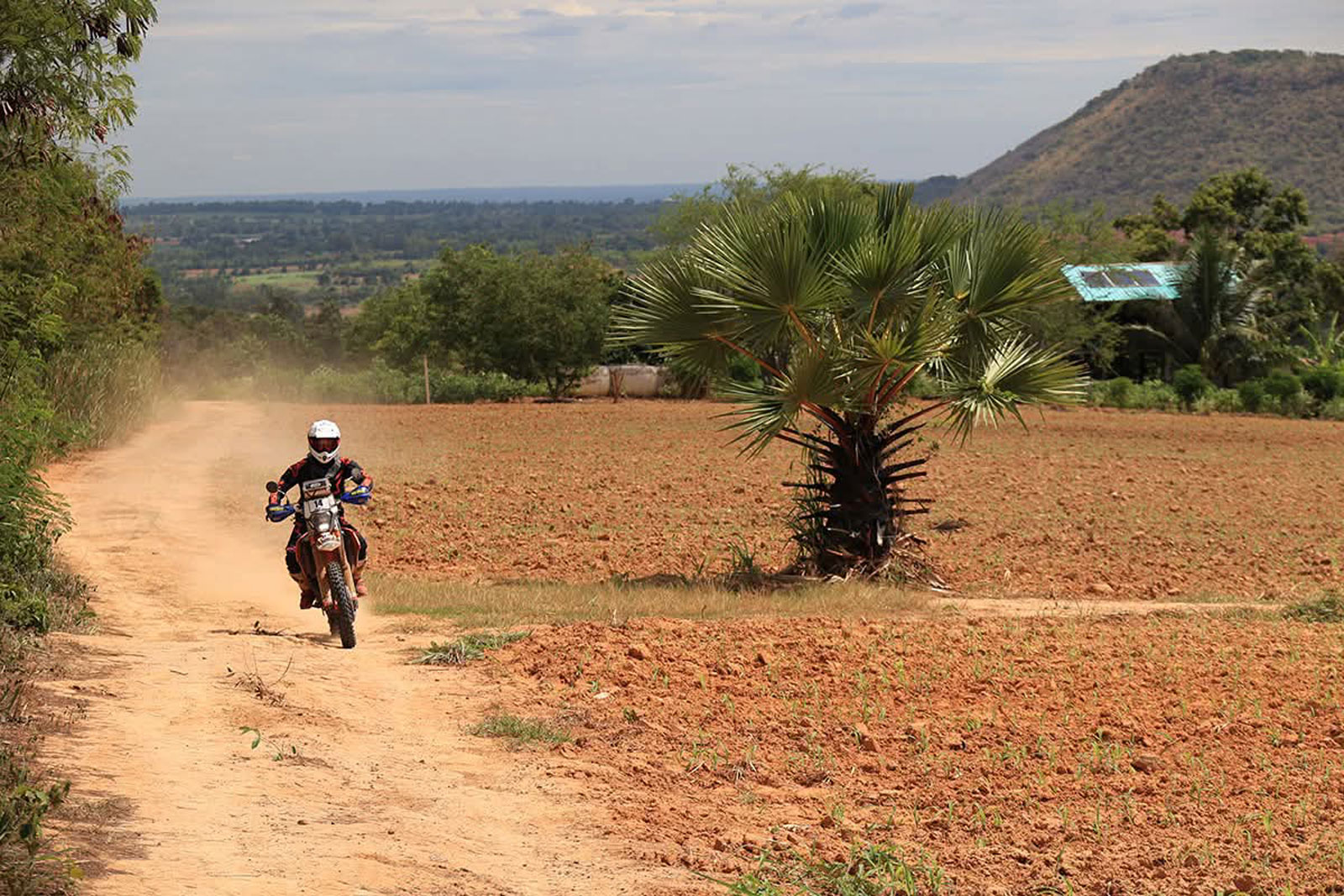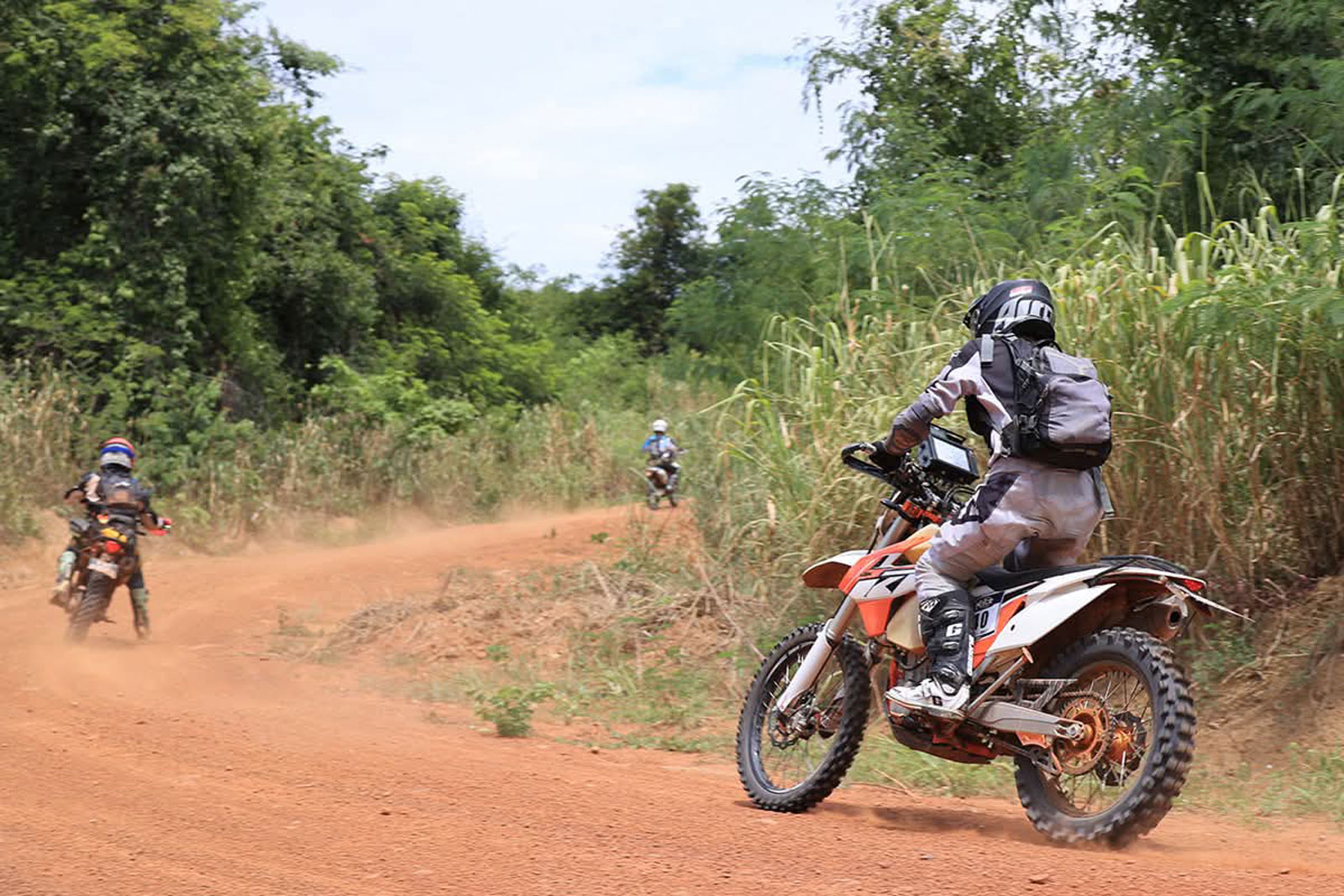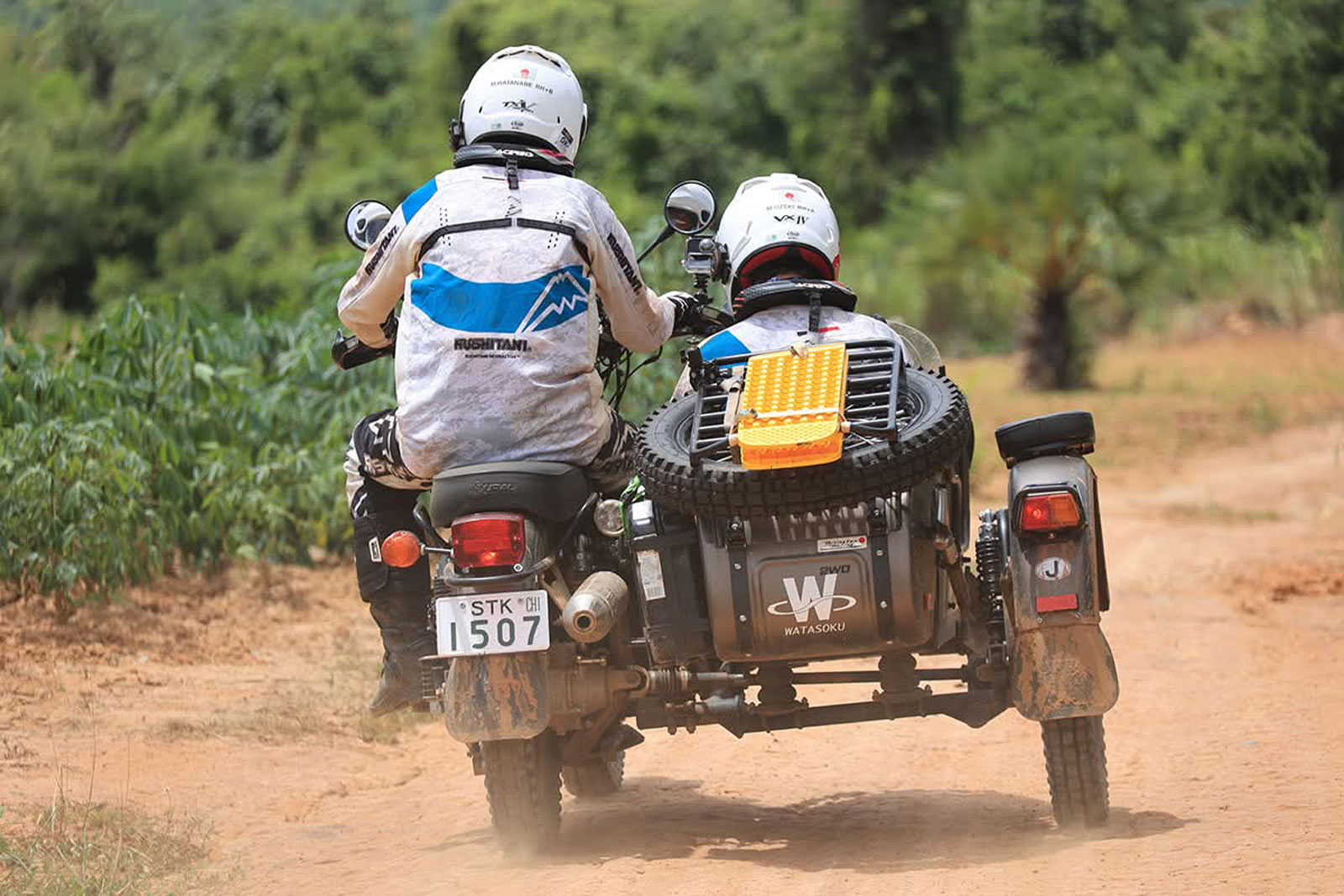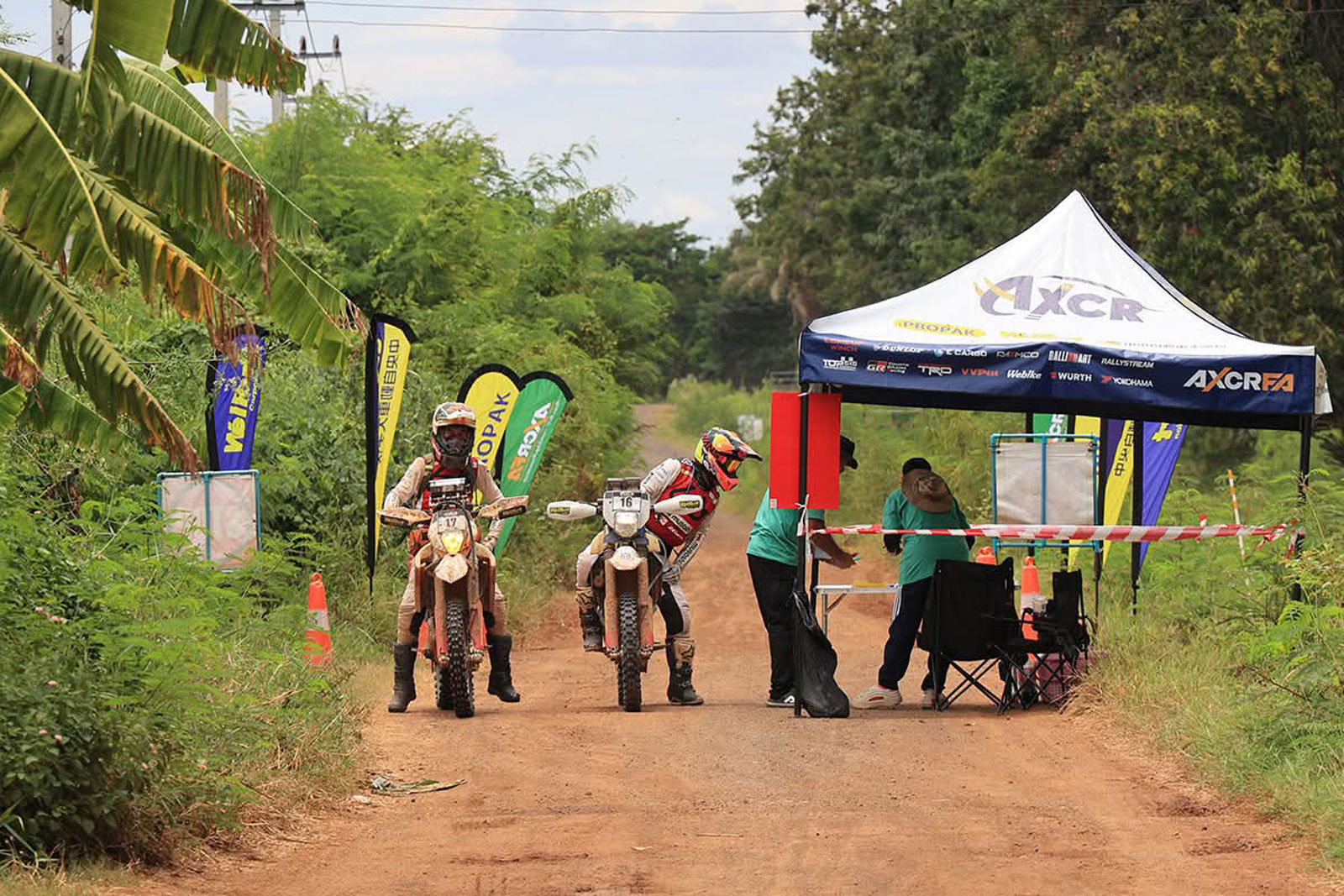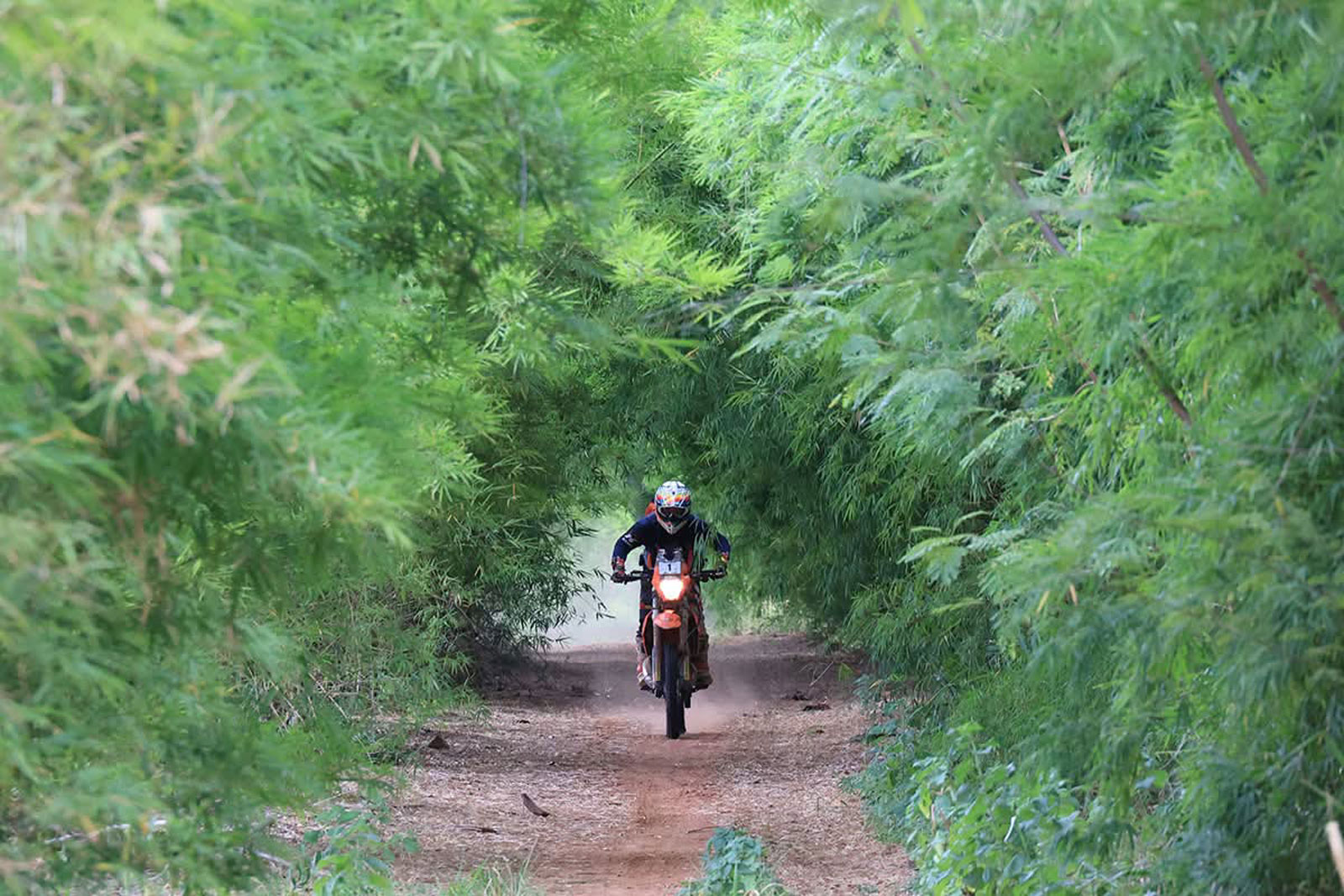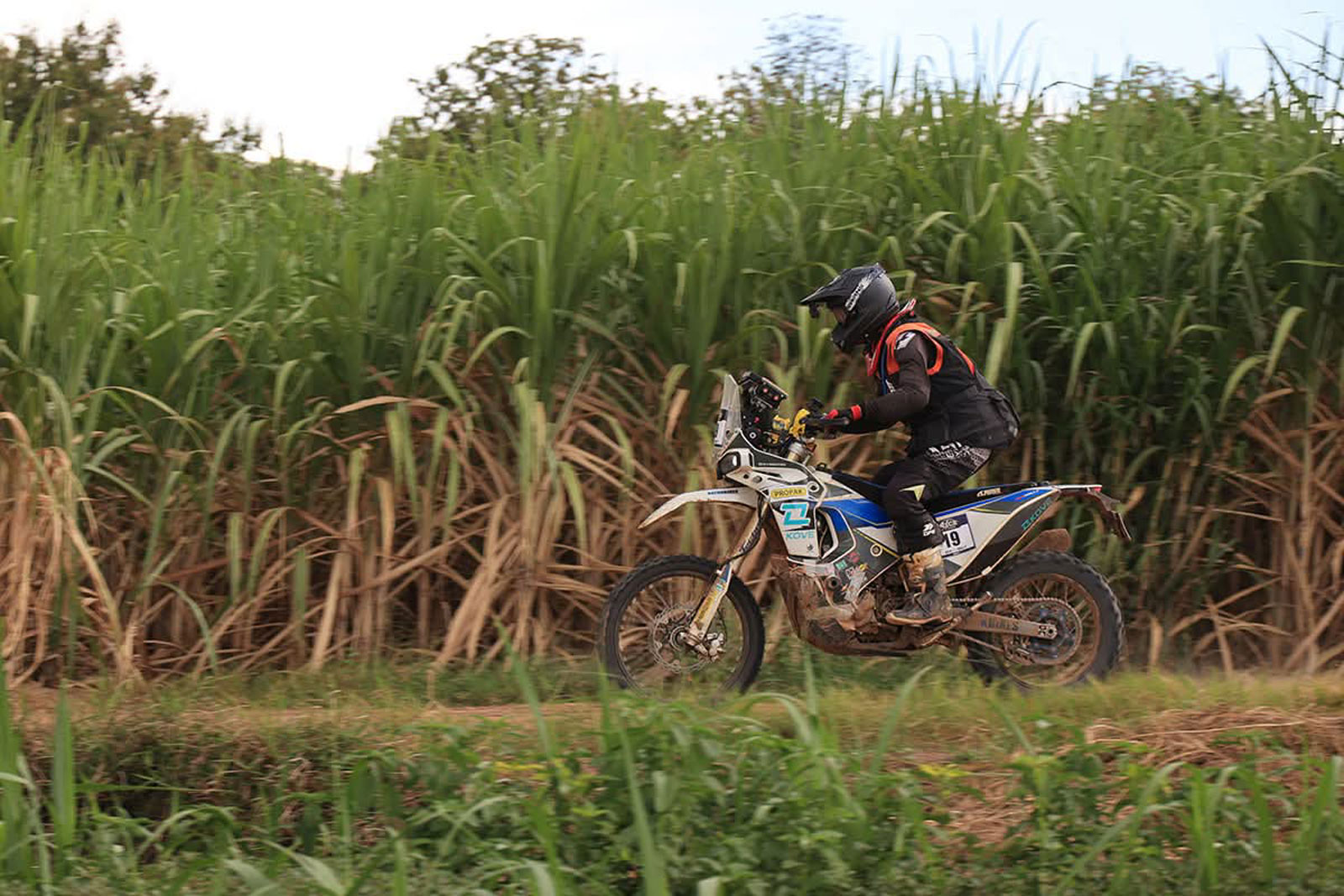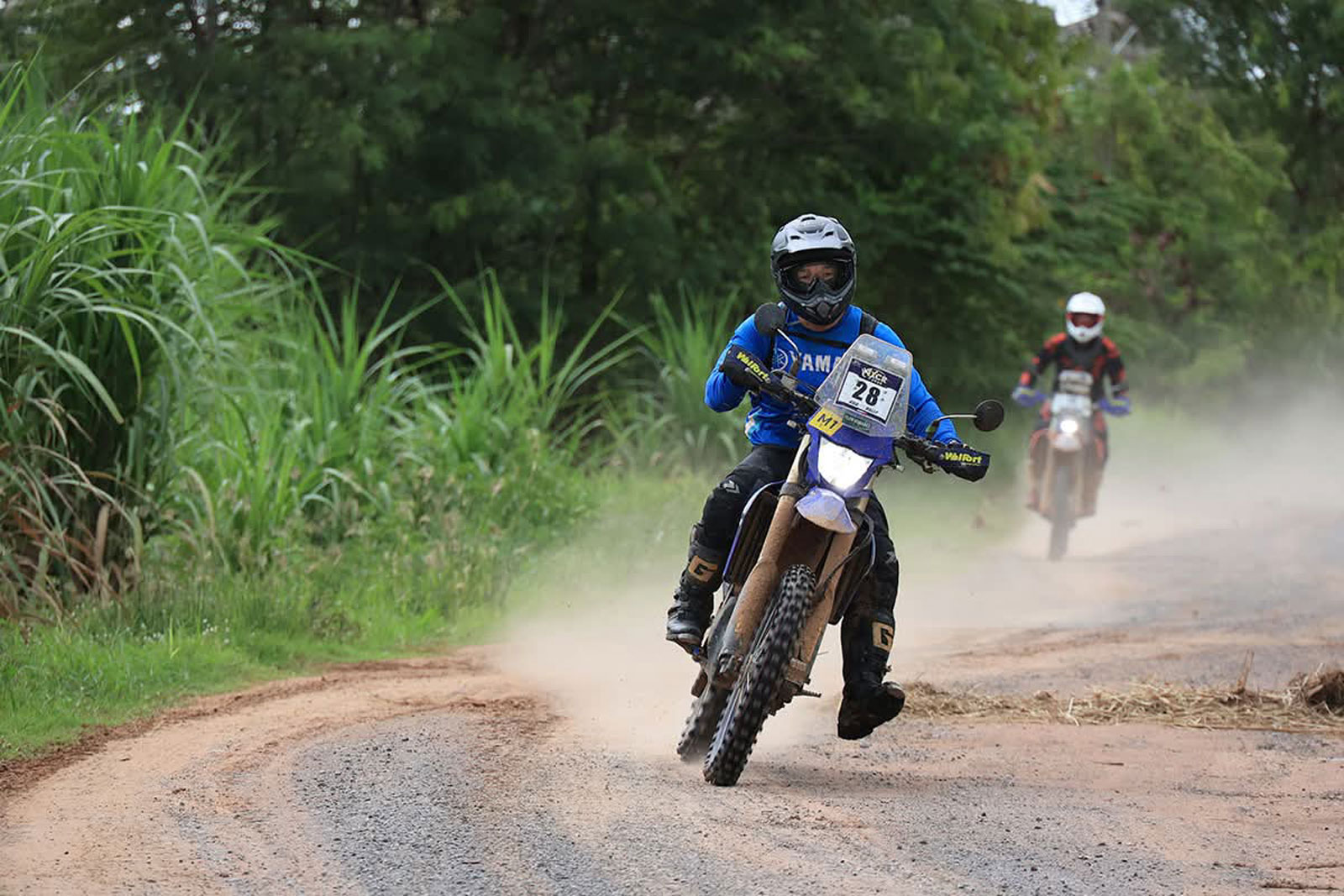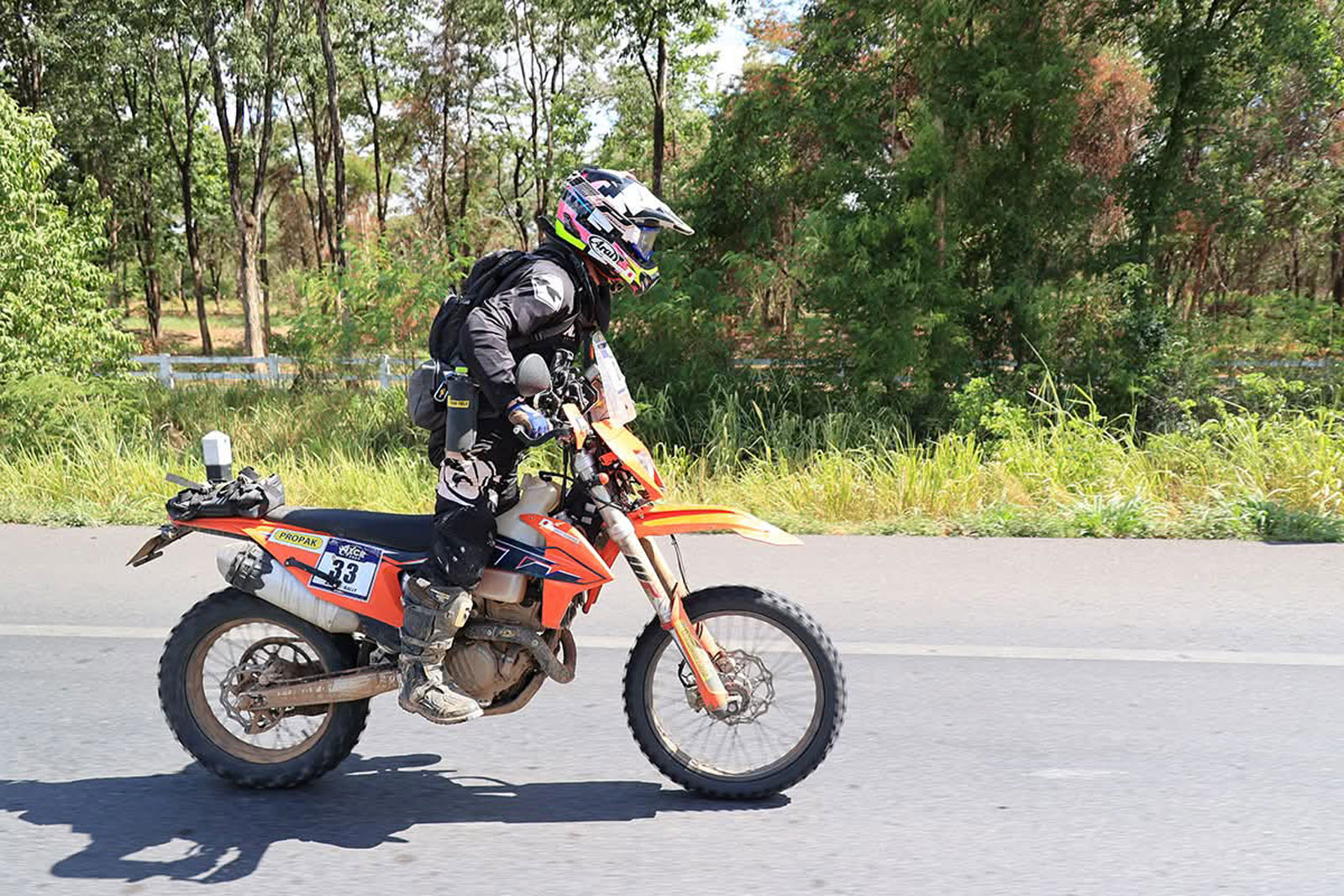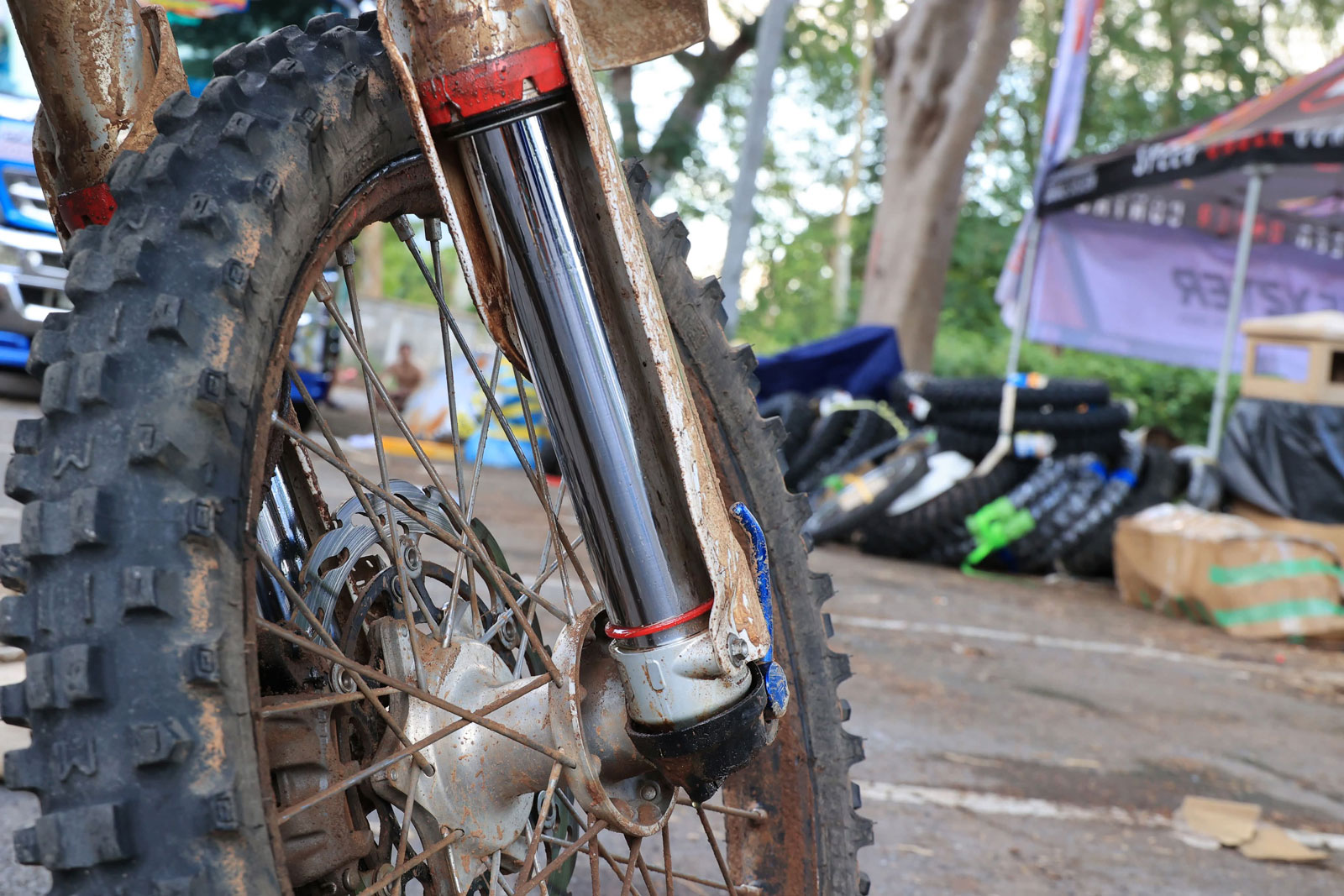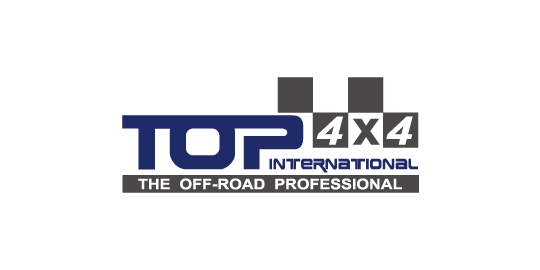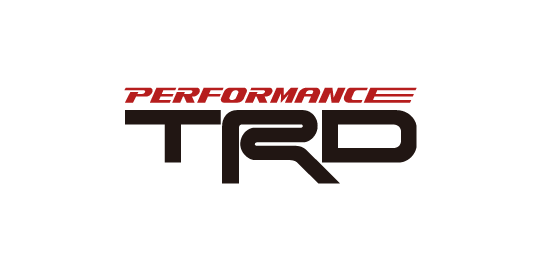

LEG3
Monday, August 11, Khao Yai
The middle stage of the competition is where body and mind begin to get used to the competition.
It is up to the team as to whether they use this to their advantage or squander their efforts.
The service crews day starts early as they must prepare before dawn to ensure the vehicles depart from the hotel on schedule. There is no tolerance for engines failing to start in the morning.
By the third morning, their eyes are swollen from working through the night without proper rest. Yet their gaze remains sharp, and they grow more adept at group work. Their bodies have adapted to Thailand's climate and water, allowing them to move efficiently despite fatigue.
During this period, drivers and co-drivers also begin to adapt to the AXCR, but the same happens to the service crew's bodies. Whether this ‘adaptation’ can be turned into a positive that propels the team forward, or whether it becomes a negative that leads to careless mistakes. How they handle this is where the leaders who oversee the team show their true skill.
Some teams climb back from early setbacks, unite, and grow stronger, while others become complacent due to a trouble-free start, leading to biases toward rankings, dissatisfaction with tasks, or grievances about treatment.
Some teams climb back from early setbacks, unite, and grow stronger, while others become complacent after a trouble-free run, and their focus on rankings and dissatisfaction with the work and treatment they receive creep in.
Behind the scenes, teams can grow stronger like living organisms or become fragile and prone to collapse. This unpredictable drama, not dissimilar to life itself, is part of the appeal of cross-country rallying. And it is most likely to occur during the mid-stage of the AXCR. This rally is not just about the performance of the vehicles it is a test of the human strength. The human condition that AI can never replicate continues today.
Having overcome the unexpectedly harsh and turbulent early stages, the third day's route featured an SS of 195.75 km and an RS of 164 km. The SS is long, but the distance travelled is relatively short. The start is on a hill at an altitude of 600 metres. The early part of the route is slightly downhill, so there is less stress on the engine, but like yesterday's SS, it is a battle through mountainous terrain with many rocks and gullies. The key to victory is finding a smooth line, avoiding damage to the machine, and maintaining a stable, fast pace while navigating large rocks and uneven terrain.
In the latter half, sandy terrain where the tyres were more than half buried appeared, and the Jimny contingent, with their smaller engine displacement and unable to follow the ruts made by larger vehicles and seemed to be struggling considerably. Just like yesterday, the wind picked up in the afternoon followed by sudden and heavy rain which obscured visibility. Thunder roared through the mountains and the previously bone-dry road surface quickly turned into mud.
In recent years, the AXCR had been lacking rain, shifting towards a high-speed battle on dry dirt roads, but this year, as the organisers had hoped, the AXCR has returned with an ‘extremely challenging’ course that harnesses the dynamism of nature.
Keep an eye on the three-way battle between Isuzu, Toyota, and Mitsubishi!
Among them, the first to charge in was the Toyota Hilux driven by Mana Pornsiricherd (Thailand) and Kittisak Klinchan (Thailand) of #101 Toyota Gazoo Racing Thailand. The defending champions, who appeared somewhat reserved in the early stages, demonstrated their true capabilities on the third day. With a relentless performance that left the second-place team over four minutes behind and dominating their rivals. The Hilux is a vehicle renowned for its robust frame, often described as ‘ready to compete in a rally as is,’ and it undoubtedly provided drivers with the strength and confidence to navigate this challenging SS without significantly reducing speed.
However, teammates Natthaphon Angritthanon (Thailand) and Thanyaphat Meenil (Thailand), who were in the overall lead until yesterday, suffered suspension trouble early on and had an accident in the second half, finishing more than an hour behind the leaders and falling far behind in the championship race.
The second-place team is the Isuzu D-MAX driven by Suwat LIMJIRAPINYA (Thailand) and Prakob CHAOTHALE (Thailand) of the #102 ISUZU SUPHAN YOKOHAMA LIQUI MOLY RACING TEAM.
The Isuzu SUPHAN team was known until two years ago for its ‘one off speed but inability to maintain performance in the second half,’ but since last year, it has developed endurance and grown into a regular contender in the top ranks throughout both halves of the race. This year, the team has consistently ranked 3rd, 5th, and 2nd from the first day, maintaining a stable pace to secure 2nd place overall. Despite being a semi-works team, it has emerged as a threat to the works teams of Toyota and Mitsubishi.
Just 6 seconds behind in third place is the Mitsubishi Triton driven by Chayapon Yotha (Thailand) and Peerapong Sombutwong (Thailand) of #112 Mitsubishi Ralliart. This marks the team's long-awaited ascent to the top of the overall standings on the third day. Last year, Chayapon was leading the overall standings until the final stages but had to retire due to engine trouble. However, in this year he has avoided any mechanical issues and his steady, smooth, and fast driving remains intact. He now leads the overall standings by over 11 minutes, emerging as a strong contender for the championship.
Hiroshi Masuoka, the team's general manager, stated before the rally, "Our engine is a 2.4-litre unit. Last year, we tried to compensate for the disadvantage against Toyota's 2.8-litre engine through engine tuning, but that backfired. This year, we have focused on both speed and durability in our setup, so we feel confident. We now look forward to the drivers' performance." Whether they can maintain this pace all the way to the finish line is another point to watch.
Additionally, the drivers operating the Triton are using the ‘H4’ full-time 4WD mode in this competition. In this mode, torque is distributed 40:50 front to rear, allowing for the smooth handling of a rear-wheel drive vehicle despite being a 4WD. But that's not all. By applying active yaw control through brake control on each wheel, the vehicle also possesses the performance to aggressively turn the nose into corners. These cutting-edge technologies, which are typically found in production vehicles, have transformed the Triton into an ‘unparalleled handling pickup truck.’ However, how will this translate in the world of cross-country rallying? We encourage you to closely monitor the three-way battle between Toyota, Mitsubishi, and Isuzu for dominance in the next-generation pickup truck market.
On this day, the Yokohama Tyre awards were given to the top five cars with the fastest times. The first to be called up to the stage at the dinner table was Mana from #101 TOYOTA GAZOO RACING THAILAND. Second was Suwat from #102 ISUZU SUPHAN YOKOHAMA LIQUI MOLY RACING TEAM, and third was Chayapon Yotha from #112 MITSUBISHI RALLIART. The representation from Toyota, Isuzu, and Mitsubishi and the appearance of the three main stars making up the top three overall, was met with thunderous applause from the audience.
(Photo: Manabu Takahashi, Text: Dai Kawamura)
Moto
The front contenders quickly rise to the top. Day 3 begins with the rally in full swing.
Day 3 of the competition is a loop course with the start and finish at the same point (the hotel where the participants are staying). The total distance for Leg 3 is 360.50 km, relatively compact, with the first rider (the first among all competitors) departing at 07:00. The target time to the SS was 1.5 hours (66.94 km to the SS start point), with the SS starting at 08:35.
Unlike the relatively flat terrain of the previous days, this day's course included mountainous roads with elevation changes. The unpaved roads were mostly compacted red soil or white sand gravel, and the moderate thunderstorms from the previous night to this morning did not create large puddles or muddy areas, nor did they cause severe dust storms, resulting in optimal conditions. In the mountainous areas, the exposed, hard rock formations and loose rocks scattered across the terrain posed the greatest challenge of the day.
While referred to as a ‘rocky terrain,’ it is not like the forest roads in Japan where fist-sized stones are scattered about. Instead, the sharp rocks from the broken rock formations are fixed and allow the tyres to maintain a firm grip whether ascending or descending.
The tricky part happens when it rains as the exposed rock becomes surprisingly slippery when wet. You can't control the uphill ascent or downhill descent and just have to surrender to gravity. If you make a mistake with the brakes, you'll fall in an instant but, fortunately, that wasn't the case, and the best strategy was to pay attention to deep ruts and sharp rocks, judge the line carefully, and slowly make your way through.
The top-tier riders told a different story. On this day, Jakkrit (#46/KTM 500EXC-F), the Asian Rally champion from Thailand, charged through the SS at an extraordinary speed that couldn't be explained by mere familiarity with the terrain alone. He jumped from 5th place the previous day to the top, overtaking Ikemachi (#16/ HUSQVARNA FE350), who had held first place for the first two days, followed by Sumaetee (#17/KTM 250XCW), also from Thailand, in third place, and Izumoto (#22/HUSQVARNA FE450) remained in fourth place.
Of course, in rally racing, speed alone isn't enough to stay at the top. The key is to minimise route mistakes, avoid penalties, and prevent issues with the machine or yourself. Even a momentary mistake can significantly impact the outcome.
In Leg 3, there were again many riders who got lost, resulting in a significant increase in the time gap between the top and lower ranks. Some riders had to withdraw early due to bike troubles, while others, feeling a little too confident in their riding, ended up crashing.
Those who have mastered the various aspects of ‘speed’ simply maintain their pace, and the gap between them and the lower ranks continues to widen, proving that rising to the top is no easy feat.
Incidentally, half of the top 10 riders are Japanese, and there are also Japanese riders of equal skill who happened to finish outside the top 10. One participant remarked, ‘It's somehow fun and enjoyable to have rivals to compete against.’ Those words left a strong impression.
Due to the unique nature of the competition, it is inevitable that experienced and skilled drivers will dominate the field, but at the same time, it is interesting to see young drivers taking on what could be considered reckless challenges. Although the number of participants is small, the Asian Rally's most distinctive feature may be its low barrier to entry compared to other overseas rallies (especially in terms of cost).
When it came to deciphering the course map (which will undoubtedly be mentioned in daily reports) I asked the veterans directly, “How can you proceed without getting lost?’ The responses were mostly, ‘Well, I do get lost, but I recover quickly,’ followed by, ‘It's because of experience,’ ‘It's instinct,’ and ‘I'm used to it.’ While this isn't something that can be immediately referenced, there's no better way to describe it. It’s all about the accumulated decades of riding and rallying experience.
The official website of the Asian Rally, where many Japanese riders participate, also publishes the entry list (including four-wheelers, sidecars, and overseas teams). You can check what kind of motorcycles they’re riding and compare the race results with the faces. We’ll continue to photograph and introduce the riders racing in foreign lands on this website, so please enjoy it until the competition ends.
(Photographs and text by Zensuke Tanaka)




